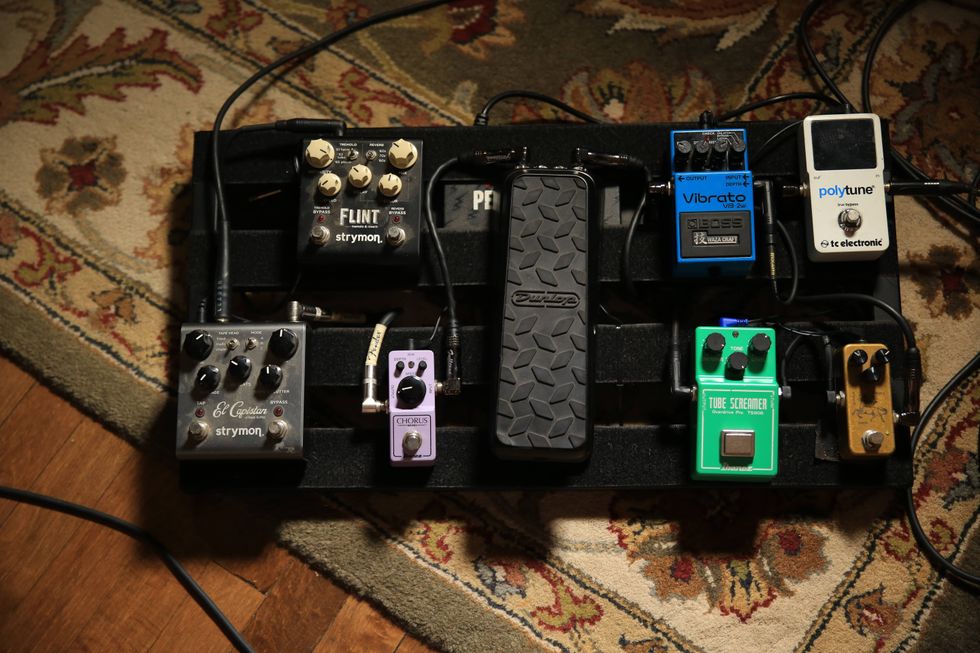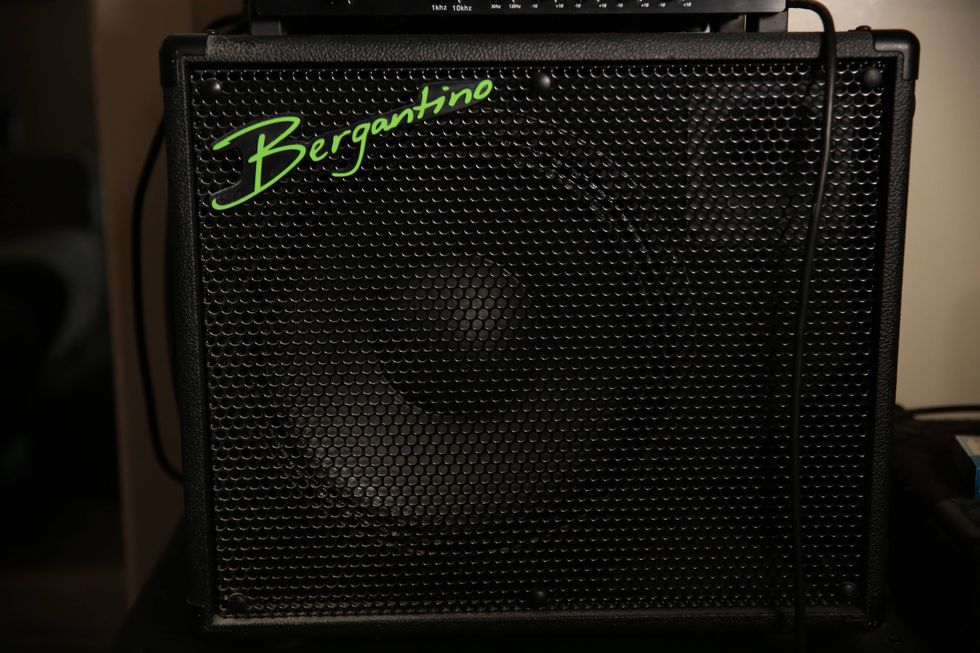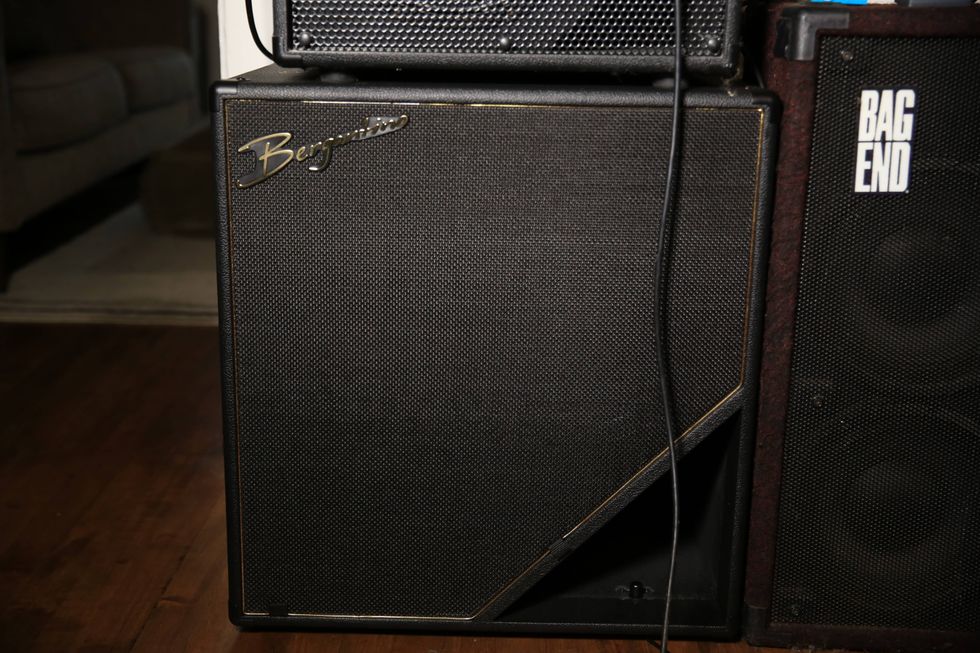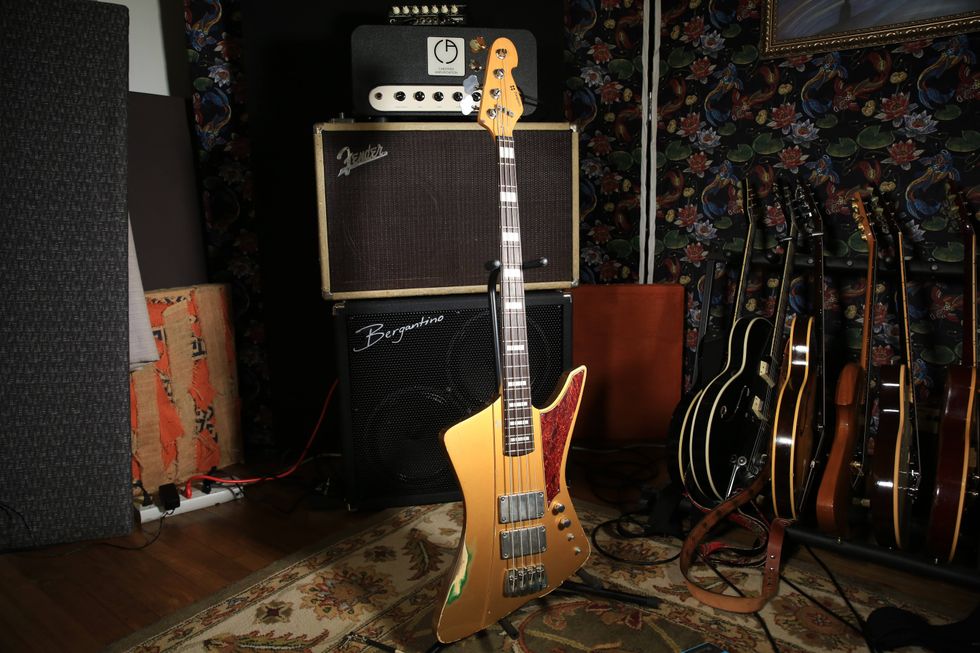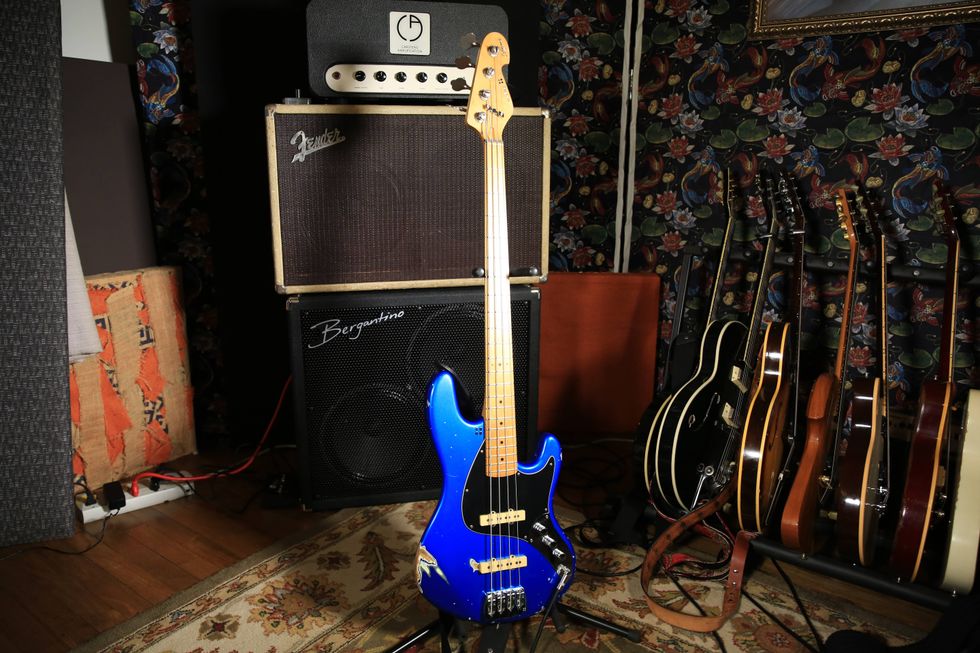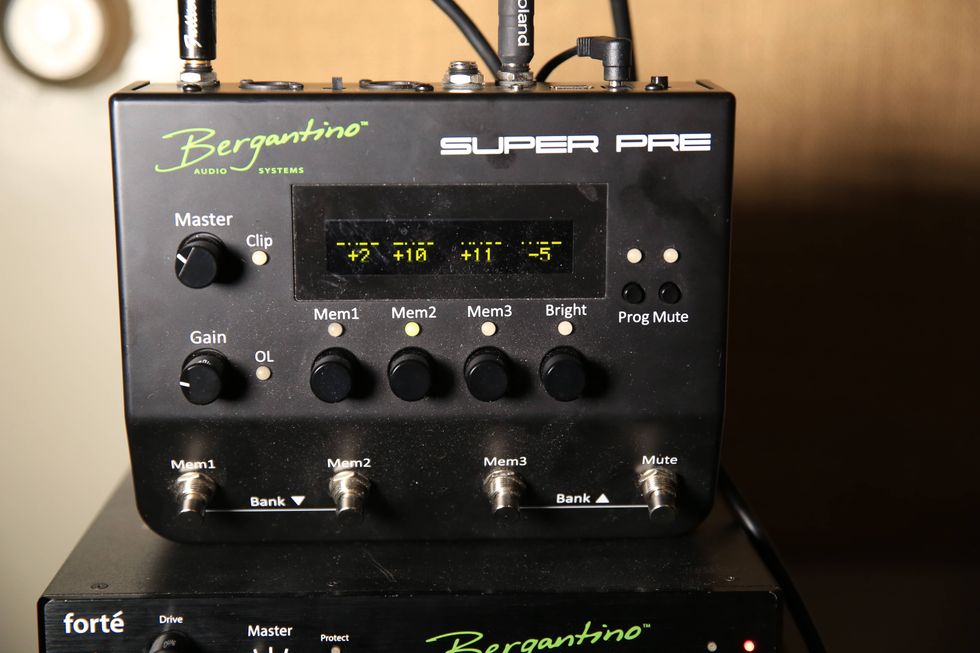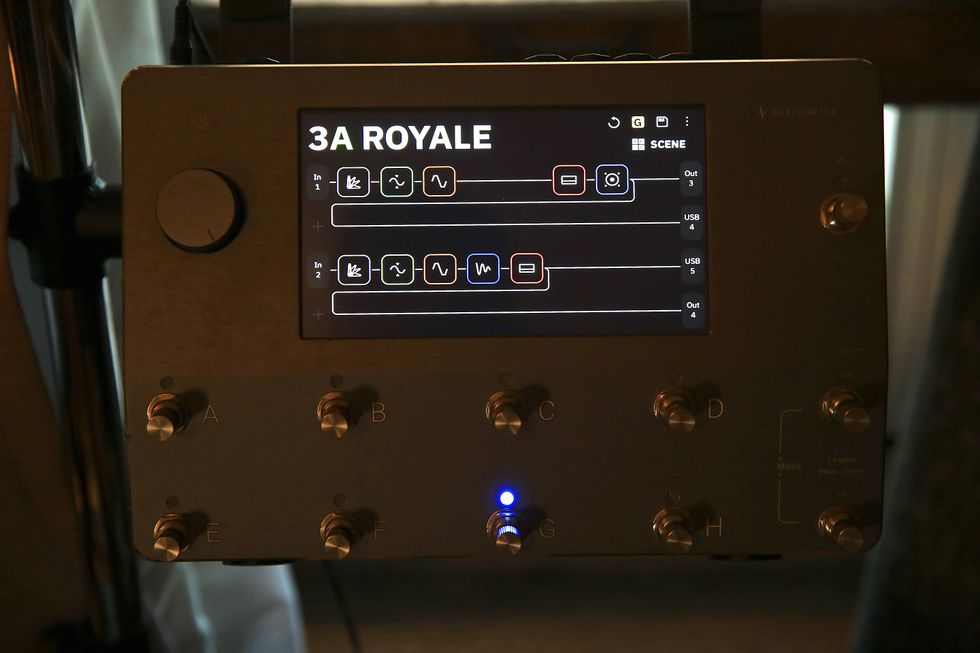What do Michael Jackson, Tony Hawk, and the Eagles have in common? Believe it or not, these three seemingly disparate entities are linked within the musical DNA of Norway’s Kvelertak.
In a world overrun with cookie-cutter knockoffs, Kvelertak is possibly the most authentically innovative rock band to come around in years. They were lumped into black metal when they first appeared almost a decade ago, but on their latest album, Nattesferd (Roadrunner), Kvelertak crafts a truly cohesive sound that may require adding yet another subgenre to the metal canon. The verdict is out on what that subgenre would be. But the band’s ability to effortlessly combine death-metal blast beats with ’80s hair-metal riffs on the album’s opener, “Dendrofil for Yggdrasil,” and blend growling, Cookie Monster vocals with fist-pumping, anthemic melodies on the first single, “1985,” is breaking new ground and making the metal community prick up its ears.
They also buck convention by playing in standard tuning, which is unusual in this era of drop-tuned metal guitar, and frontman Erlend Hjelvik sings in his native tongue, demonstrating that impassioned music can most certainly transcend language barriers.
The band’s three guitarists, Bjarte Lund Rolland, Maciek Ofstad, and Vidar Landa, balance brutally heavy riffs with instantly hummable harmonies reminiscent of icons like Thin Lizzy, Iron Maiden, and the aforementioned Eagles. But they’re not overly derivative. “Heksebrann” features fingerpicking that could easily fit on a country track, and it’s such moments of unexpected color that reveal the guitarists’ breadth of musical knowledge. All three manage to complement one another stylistically and sonically, with a massive wall of guitar tones that is equal parts punk and power. Metal power, that is.
Kvelertak, which translates to “stranglehold” in English, formed in Stavanger, Norway, in 2007. The sextet released a demo called Westcoast Holocaust that same year, before being picked up by End Records for their eponymous debut, which was released in 2010. Meir, the follow-up, came out in 2013 on Roadrunner and was named Rolling Stone’s No. 2 metal album of the year. They’ve also been playing live … a lot. So much so that with Nattesferd they set out to push their boundaries by recording live without a click track. The result is a refreshingly real album that captures the vibe of a band reveling in the moment, rather than some carefully orchestrated slice of perfection.
PG caught up with Rolland and Ofstad on a two-week break during a rigorous summer touring schedule. Rolland was at home in Norway; Ofstad was vacationing in Croatia. We talked about their crushing aesthetic, their gear, their influences, and making the roaring and beautiful Nattesferd.
Kvelertak’s music seems to pull from many different sources. Who were some of your early influences?
Rolland: I was a late bloomer. I’m one of the only guys in the band that didn’t really grow up with metal. As a kid, I was a big Michael Jackson fan. Then I moved on to Pink Floyd and from there to everywhere, including a lot of black metal—particularly Satyricon, Darkthrone, Stormcast, Burzum, Endstille. It’s a mix of all kinds of music, really.
Ofstad: I started playing bass guitar when I was about 12, because I was playing skateboard video games and thought the music was awesome. I found a lot of music through Tony Hawk video games. There was one really bad game—I can’t remember what it was called—but the Deftones were on it, and it was the scariest thing I’d ever heard.
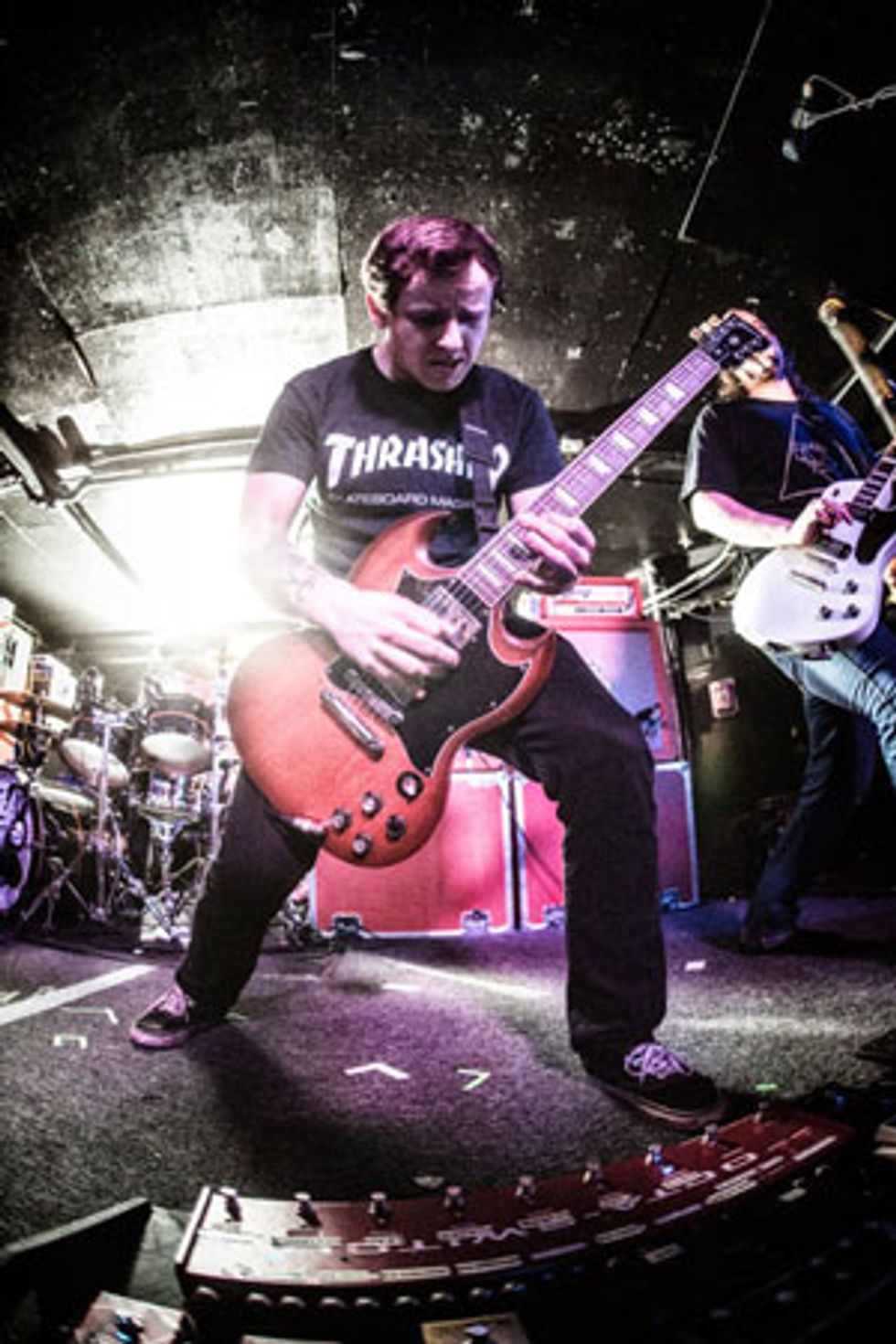
Maciek Ofstad lays it out: “We’re just dudes that want to play rock ’n’ roll, and we really love playing live shows, and that’s what we’ve been doing. There hasn’t been any plan except for writing songs that we like and want to play.” Photo by Tim Bugbee/Tinnitus Photography
Were there any particular guitar players you modeled yourselves after or tried to emulate?
Ofstad: My mom is a violinist and I played violin when I was younger, but when I got into skateboarding and punk, I wanted to play guitar. I come from Sandnes, Norway, where there’s a good hardcore scene, so I started going to shows when I was 13 or 14, and I just wanted to play that music.
When I got better on guitar, I started to get influenced by guitarists. Death was the first band that got me into wanting to play good. Chuck Schuldiner was a great guitar player and a very good songwriter. But I started out just wanting to play fast. I played in hardcore and punk bands. Every Sunday I would sit in my room and learn all of the songs that I loved. I just ate everything up.
With the triple-guitar attack, one can’t help but detect a bit of Thin Lizzy—especially with the harmonies.
Rolland: Definitely, but that came later. When we got three guitarists we started experimenting more with fancy guitar licks. Iron Maiden, too, for that matter. And there’s a lot of Southern rock influence, too, like the Eagles.
How did the three-guitar line-up come about?
Rolland: It was a matter of some line-up changes that eventually led to having one more guitar player in the band. We quickly realized it sounded way more massive live. We could do the two-way harmonies without losing the extra power from the rhythm guitar. It’s a way to keep the momentum up and going. Even if you just have one guitar playing lead, you still have two guitars playing rhythm in the background, so you don’t lose the power, which is one of the big benefits of having three guitars live.
Maciek, how did you join Kvelertak?
Ofstad: I’d been playing since I was 16 and did a bunch of tours in Europe. I was pretty much over the whole band thing when I saw that Kvelertak needed a guitar player. I knew Vidar and Marvin [Nygaard, bass]. They were in the same scene as me, and they played in a death metal band that was really cool called the Rape of Lucrece. Those guys were pretty gnarly.
I saw Kvelertak live and they were awesome, so I figured I would talk to Marvin and, if they needed me, it would be cool. At the time Kvelertak was just a local band that played a couple of shows per year. I joined and we’ve been touring ever since.
Did you have any reservations about playing in a three-guitar band?
Ofstad: Yeah, I thought about it. I’d never played in a band with three guitars and to arrange three guitars is complicated. But when it works, it works. It’s a really cool songwriting process, fitting everyone into the song. And when it’s supposed to just go forward we all blast the same thing and it sounds huge. Look at Maiden.
What separates the three of you stylistically?
Rolland: None of us are virtuosos. We all come from different backgrounds. I’m the one who sticks out the most, because I don’t play with a pick. I also use single-coils, like P-90s. The other guys use humbuckers. Maciek is more of a lead guitarist and Vidar is more of a rhythm guitarist. I guess that’s the biggest difference.
Brandishing a Nik Huber Krautster II, Vidar Landa digs into the high E string while Marvin Nygaard holds down the bottom end, and a wall of Orange and Marshall amps bear loud witness. Photo by Tim Bugbee/Tinnitus Photography
What made you gravitate towards fingers rather than a pick?
Rolland: When we started Kvelertak, I played drums. I had just started playing guitar and had never played electric before. I just had an acoustic. And so, I was playing drums and running back and forth trying to explain stuff to the guitarists, so I eventually picked up the guitar myself. I never actually thought that I was going to end up playing. This was kind of a side project that just took off [laughs]. Had I known that at the time, I might’ve started playing with a pick, but it just ended up like that.
Do you use your index finger as a pick?
Rolland: All three fingers, and I use my thumb sometimes. I really like the fact that I can feel what I’m doing, and I feel like I am more in control.
When the three of you are playing tight, unison rhythms, are you conscious of a unified picking technique?
Rolland: It’s all sort of downstroke-ish. It comes down to trying to retain the rock or punk-rock grooves. Since I don’t play with a pick, everything naturally defaults to downstrokes. It’s a self-imposed limitation that keeps it simple and intricate at the same time.
Do you spend time crafting your tones so you’re not stepping on one another?
Ofstad: We’ve become a lot better with that, but that’s just recent, like over the last two years. Before, we all used Orange amps and it’s pretty much been plug and play—maybe grab some pedals you like and do your thing. But we’ve played a few hundred shows now, and we’ve become better at putting ourselves in different positions in the mix. I never thought about these things much, because I just played punk and hardcore. But now it makes sense to do things well.
How do you decide who plays what?
Rolland: It’s just something we figure out in rehearsal—whoever has the most natural feel for something. It usually falls naturally that Vidar will play the rhythm stuff and Maciek will play the more advanced lead stuff. Sometimes we switch it up a little. Sometimes Vidar and Maciek will play lead and I’ll play rhythm, or Maciek and I will play a lead and Vidal will play rhythm. It’s not really something we think a lot about when writing songs.
Ofstad: We all have very different playing styles and, on the new album, it is very clear that that’s a big part of why three guitars work. Everyone very naturally finds his place in the song—everyone has his own characteristic. And Bjarte playing with his fingers sounds way different than what I play.
Nattesferd is self-produced with Nick Terry engineering. It’s your first record without Converge’s Kurt Ballou at the helm. Was there something you were hoping to achieve producing it yourselves?
Rolland: We thought we could produce it without Kurt’s help, even though he was very instrumental, especially on the first record. He helped us tighten up arrangements. We still came prepared and had songs demoed, but it was something we really needed.
Since then we’ve evolved, having played so many live shows, that we felt we might as well just record it live: drums, bass, and three guitars at the same time. The arrangements are also simpler and more live-based. There wasn’t really that much to produce, or left to produce, by the time we got into Amper Tone Studio in Oslo.
Vidar Landa’s Gear
GuitarsNik Huber Krautster II
Danelectro 12SDC 12-string
Vox Phantom XII 12-string
Amps
1979 Marshall JMP 50-watt
Orange Rockerverb 100 MK III head
Marshall & Orange 4x12 cabs
Effects
Boss CE-5 Stereo Chorus Ensemble
Strings and Picks
Ernie Ball 2215 Skinny Top/Heavy Bottom (.010–.052)
Dunlop Nylon .73 mm
Bjarte Lund Rolland’s Gear
GuitarsGibson Les Paul Special Double Cut with Lace PS900 Soapbar pickups
Nebelung Riffmeister with P-90s
Framus Tennessee Custom with TV Jones TV Classic Pickups
Gibson SG Junior with P-90s
Peavey T-60
Fender Standard Telecaster
Fender Paramount PM-1 Dreadnought acoustic
Amps
Friedman BE-100
Orange Rockerverb 50 MKI
Orange and Marshall 4x12 cabs
Effects
Boss CE-5 Stereo Chorus Ensemble
Boss ODB-3 Bass Overdrive
Frantone Peachfuzz
Pro Co RAT 2 Distortion
Red Rooster OD clone
Strings and Picks
Ernie Ball 2221 Regular Slinky (.010–.046)
Were there problems with bleed-through because you recorded live, or was everyone isolated?
Rolland: We had everything isolated, but we regulated the spillage from the guitar amps so we could hear. The studio had a rehearsal space vibe to it. There were sliding doors so that we could regulate the bleed.
What amps did you use in the studio?
Rolland: Vidar used a really good sounding 1979 Marshall JMP 50-watt head. I used a Friedman BE-100 head and an Orange Rockerverb 50. I also used a Red Rooster copy pedal made by Kurt Ballou and Vidar, and I will use chorus occasionally.
Ofstad: I used an Orange Thunderverb 200 run at 100 watts through an Orange 4x12 cab. For guitars I used my Gibson Flying V90 with Lace Nitro Hemi pickups. I also started to use a Fender Stratocaster, which is new to me, but it works.
What made you pick up a Strat?
Ofstad: Just curiosity and, with the new material, it’s way more dynamic. On the other albums we hadn’t really thought about who uses what, but now, with the new songs, it just made sense. The Strat feels clearer to me than a Gibson, so I thought, “Let’s try it.” There are a lot of Fenders in the band now.
The album does have more of a classic-rock vibe to the overall sound, as opposed to a modern metal sound. Maybe standard tuning and the Fenders and Gibsons have something to do with that? Was it a conscious decision to defy convention in that way?
Ofstad: In the studio, definitely, but it just happened. Bjarte started playing the Telecaster for a couple of songs because he wanted the single-coil sound and it evolved into being what it is.
You both collaborated on the main guitar riff in “Nattesferd.” Can you explain?
Rolland: Maciek plays it, but I wrote the riff. That’s actually a song we didn’t get done for the last record. He’s emulating me, basically, but he plays
it better than me, so he plays it on the album.
Maciek, you play the solo on “Nattesferd.” Do you craft your solos beforehand or are you improvising in the studio?
Ofstad: On solos, it’s always been in the studio. I try not to think too much about it until we actually have to track, because then it’s just natural. I wasn’t going for anything in particular. It just happened. Originally, that was the Strat into the Thunderverb through a Thermionic Culture Vulture, but we dropped the Culture Vulture for the solo. I did use it for the main riff and the solo on “Bronsegud.”
Do you have a favorite track that best represents Kvelertak at this stage of the game?
Ofstad: I enjoy playing all of the new songs, because every track is different. But if I have to choose a favorite it would be “Heksebrann.” It really works live. We played it live at the beginning of summer on the festival gigs and it’s just a really cool song to play.
It definitely has some interesting parts and changes with some nice fingerpicking.
Ofstad: Right, there you go with the Tele—the country lick [sings lick].
It also changes keys from major to minor. What was the writing process like for the song?
Ofstad: The hook in the song, the country thing, started out as a joke at a rehearsal. It was like, “That would be stupid to do it like that.” And 20 minutes later it was like, “Wait a second, maybe that’s cool.” I think it’s good when you write music that you don’t like the first time you hear it. And then you get the “oh shit, maybe we have something here” moment. That’s a good indicator that you’re on the right track.
The Norwegian band’s line-up includes, from left to right, bassist Marvin Nygaard, guitarist Maciek Ofstad, drummer Kjetil Gjermundrød, vocalist Erlend Hjelvik, guitarist Vidar Landa, and guitarist Bjarte Lund Rolland. Photo by Paal Audestad
Critics are saying that the song “1985” has a real ’80s vibe, probably stemming from the eighth-note groove and the blues licks in the chorus. Who came up with that song?
Rolland: I wrote most of the riffs for it and we put it together in rehearsal. It was one of those riffs where you go, “Can we really get away with that?” We wanted to throw people off a little.
Ofstad: I hated that song the first five times we played it. I was like, “This is stupid.” But it’s one of my favorite songs now—especially when the video came along from Fredrik Hana. It really made the song. It gave it a face and also maybe gave it the edge that it needed—being scary and fucked up.
Despite your reservations, the reaction to “1985” seems to be overwhelmingly positive.
Rolland: If that’s the common perception, I’m fine with that, but it’s not necessarily on our Facebook comments [laughs]. Some of our more hardcore fans were a little worried, actually. But we kept telling them not to worry. They have the rest of the record. It’s certainly one of my favorites from the record.
Are you surprised by the overall success of the band so far?
Ofstad: I’ve been surprised ever since we released the first album. When I joined the band, I was pretty comfortable with the band just playing a couple of shows a year. So everything that’s come since is crazy. We’ve toured with all my favorite bands, met a lot of great people, and made a lot of great friends. We’re just dudes that want to play rock ’n’ roll, and we really love playing live shows, and that’s what we’ve been doing. There hasn’t been any plan except for writing songs that we like and want to play. I’m very, very thankful that people enjoy what we do.
Maciek Ofstad’s Gear
GuitarsGibson Flying V90 with Lace Nitro-Hemi humbuckers
Gibson SG Standard with Lace Nitro-Hemi humbuckers
Fender American Standard Stratocaster HH with Lace Nitro-Hemi humbuckers
Fender Limited Edition American Standard Telecaster HH with Lace Nitro-Hemi humbuckers
Ampeg Dan Armstrong ADAG Lucite
Amps
Orange Thunderverb 200
Orange PPC412 cabs
Effects
Dunlop Volume (X) DVP3
Dunlop CBM 95 Cry Baby Mini Wah
MXR Custom Badass Modified O.D.
MXR M109 Six Band Graphic EQ
MXR EVH90 Phase 90
MXR M169 Carbon Copy Analog Delay
MXR EP101 Echoplex Preamp
Electro-Harmonix Little Big Muff Pi
Electro-Harmonix Micro POG
TC Electronic Hall of Fame Reverb
Boss TU-3 Chromatic Tuner
Boss NS-2 Noise Suppressor
Thermionic Culture Vulture plug-in
Carl Martin Octa-Switch MKII Effects Switching System
Strings and Picks
Ernie Ball 2215 Skinny Top/Heavy Bottom (.010–.052)
Dunlop Tortex .88 mm
So, your emphasis was on the music rather than becoming famous?
Ofstad: Yeah, I always just wanted to play music—except for when I went to high school and had to play jazz. I hated that. I had a really good guitar teacher, but he didn’t understand that I just wanted to play Iron Maiden songs. I had to play Joe Pass, which is cool—you end up being a really good guitar player. But when you have ADHD it’s boring. Jazz is boring. Now that I’m older I like it. I can enjoy it. Back then I just wanted to get it done quickly and play really fast, which is a stupid approach to playing guitar [laughs].
“Svartmesse” also has a bit of an ’80s reference. The guitar intro is almost a nod to Stevie Nicks’ “Edge of Seventeen.” Rolland: Stevie Nicks? That’s purely intentional [laughs]. That song is the best example of collaboration in the band. The intro [sings the “Stevie Nicks” part] was Maciek. I came up with the verse riff. We didn’t know where to go with it, so I went out for about an hour and when I came back they had put it together with the chorus, which I believe was Maciek’s idea. The bridge and the key change came together after that.
“Bronsegud” has a punk-rock vibe, rhythmically speaking, but the guitar licks have more finesse.
Rolland: I thought we needed something that was a little faster and more punky. It’s cool to play simple three-chord punk rock, but it gets old pretty quickly. One of the fundamentals of the band in the beginning was that we set out to make fancy punk rock in a way. And then we started involving more elements of metal and other stuff. That song is definitely a throwback to the earliest ideas of what we wanted to do with the band. It ties it all together.
Do you have any advice for someone just learning to play?
Ofstad: Yeah. Just play. It’s the only way to do it, man. Just pick up the guitar. You’re probably going to suck, but just keep on doing it. A couple of years back I saw Dave Grohl talking about American Idol and he was wondering how anyone could judge a kid playing guitar when he’s 14 and he sucks—and just say, “You have nothing to do with music.” Of course, you’re going to suck for the first two or three years. Your band is going to be horrible, but then you start a new band and you’re going to be awesome, so just keep on playing. Go for it. Do what you like and don’t care what people say or do. The old cliché answer, but it’s the only answer.
YouTube It
Don’t think a three-guitar band playing in standard tuning can bring the metal? Check out Kvelertak live in London in 2013, where guitarists Bjarte Lund Rolland, Maciek Ofstad, and Vidar Landa steam ahead full bore on “Bruane Brenn” from their breakthrough album, Meir.




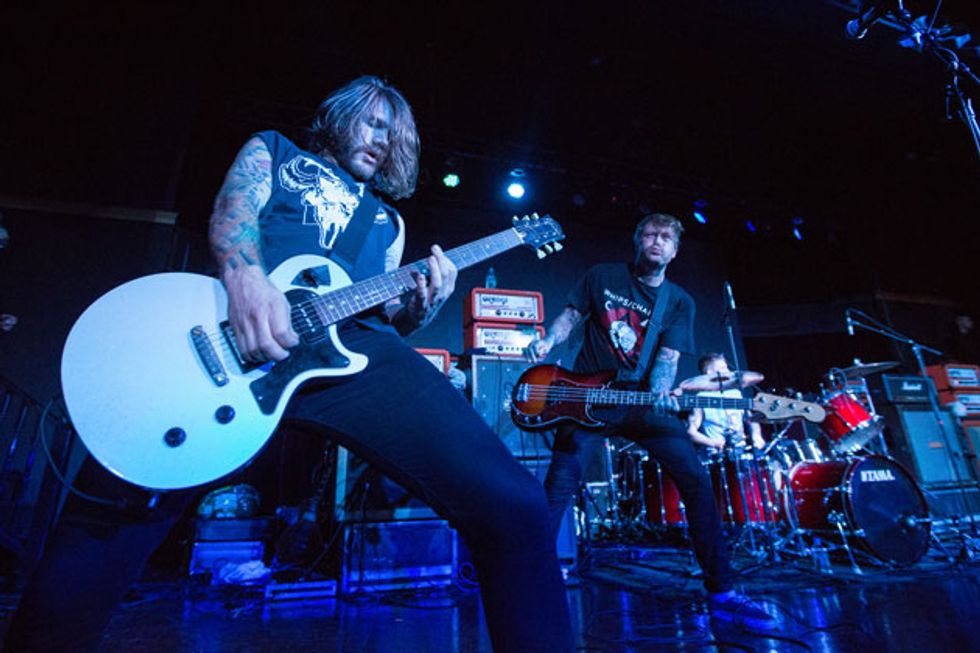
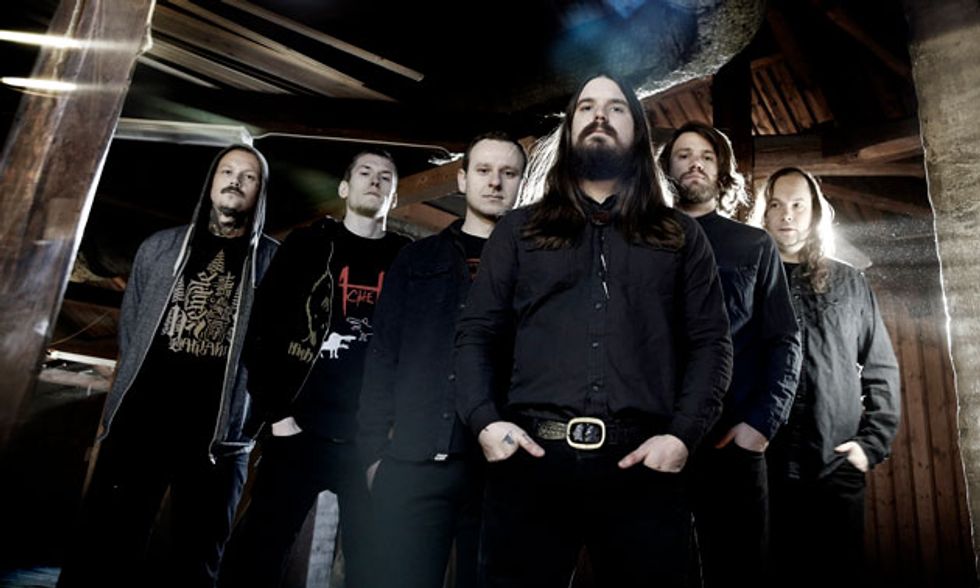
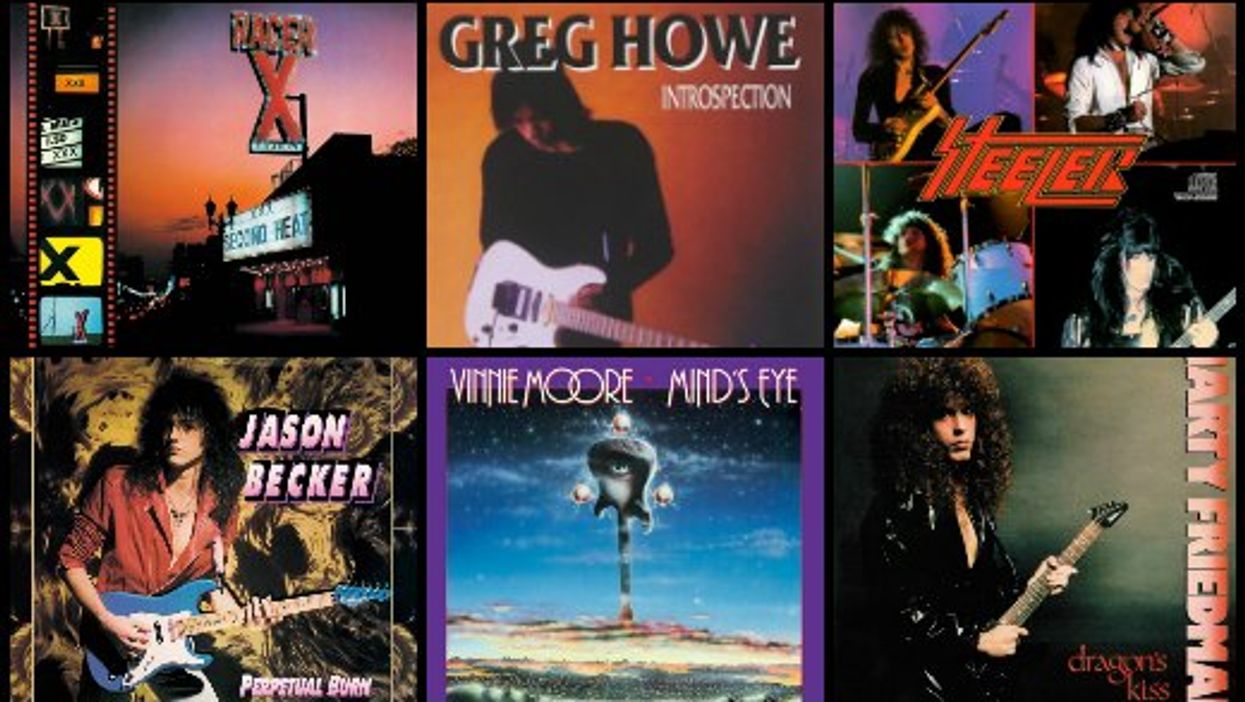
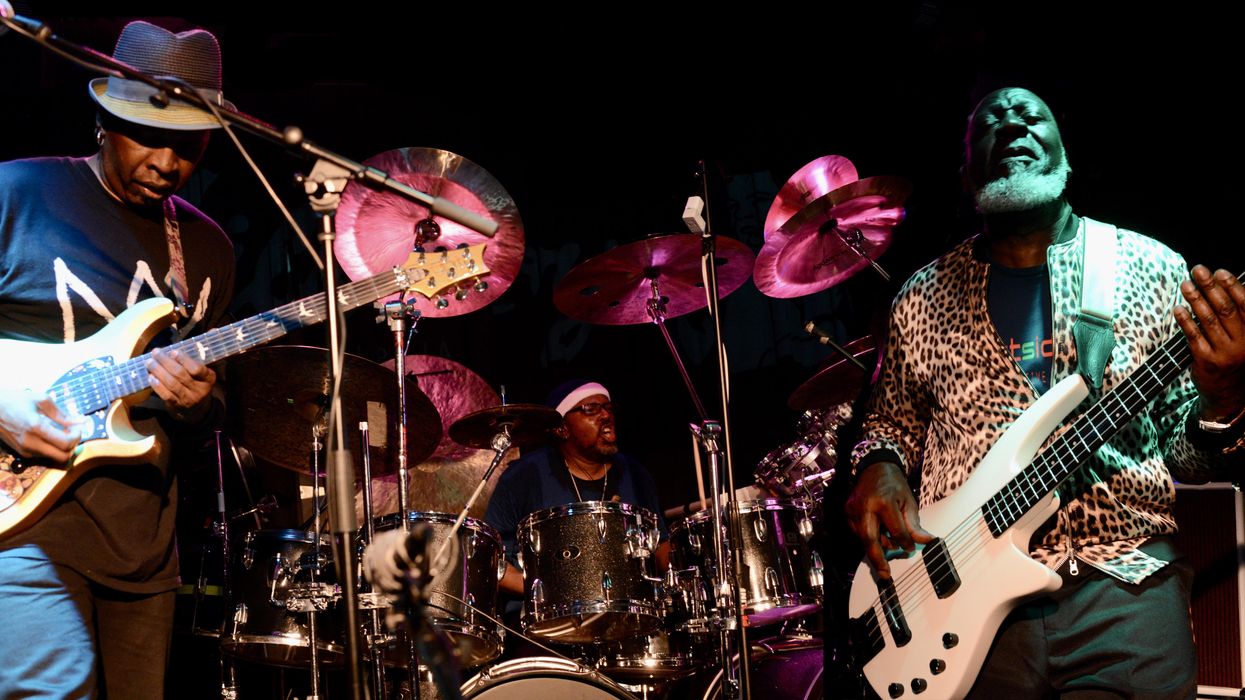


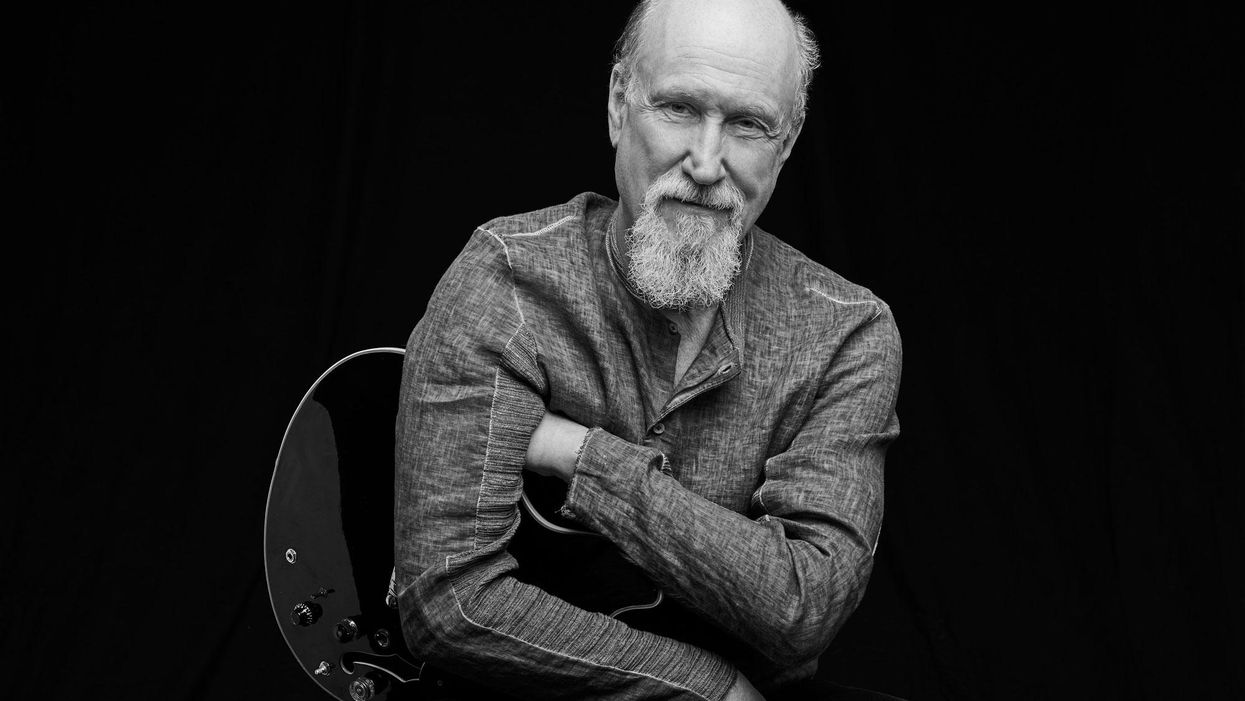
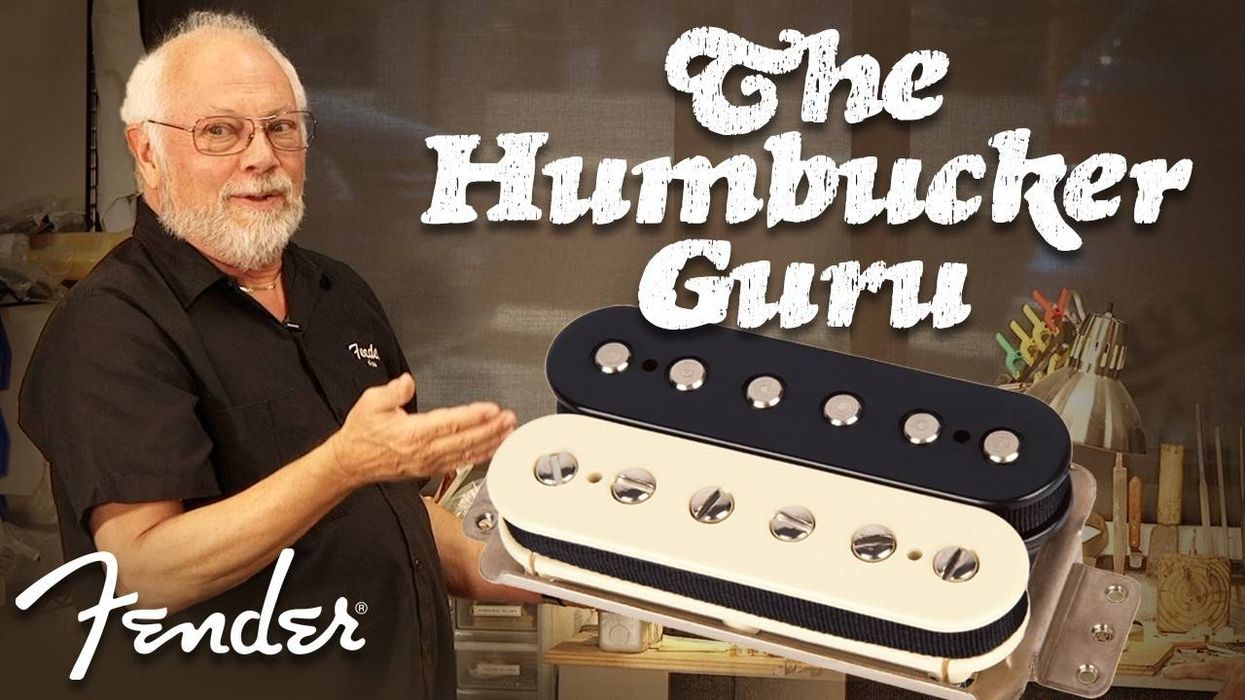
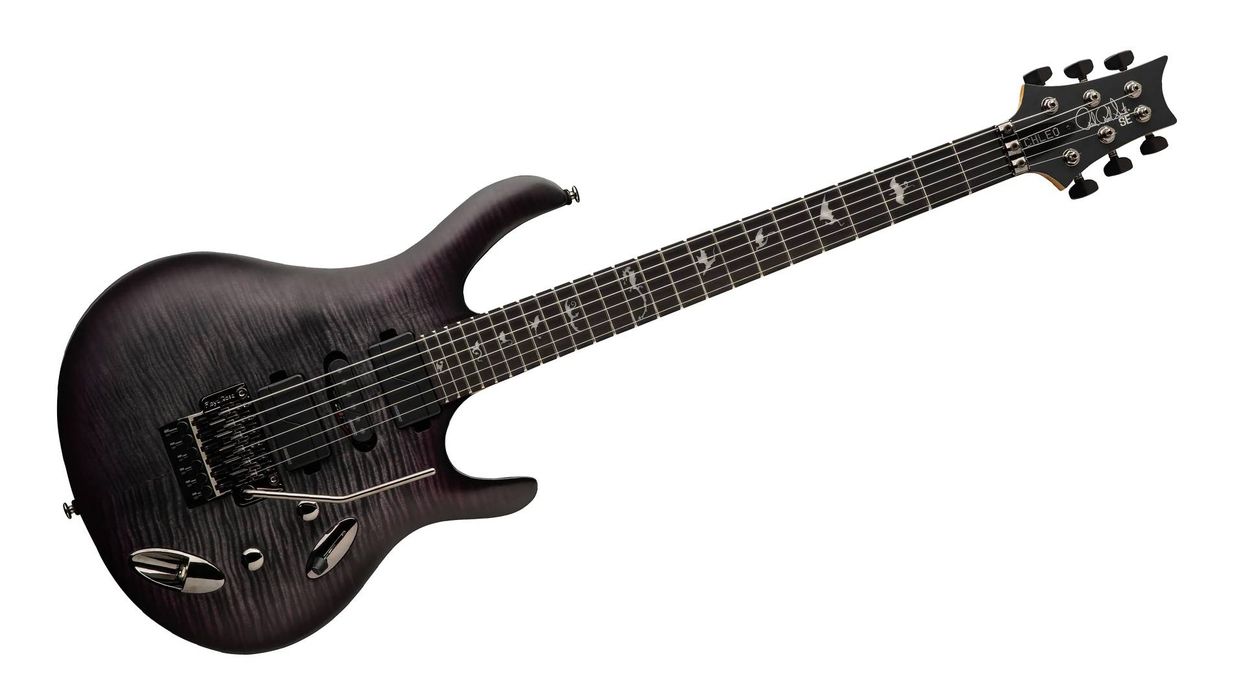

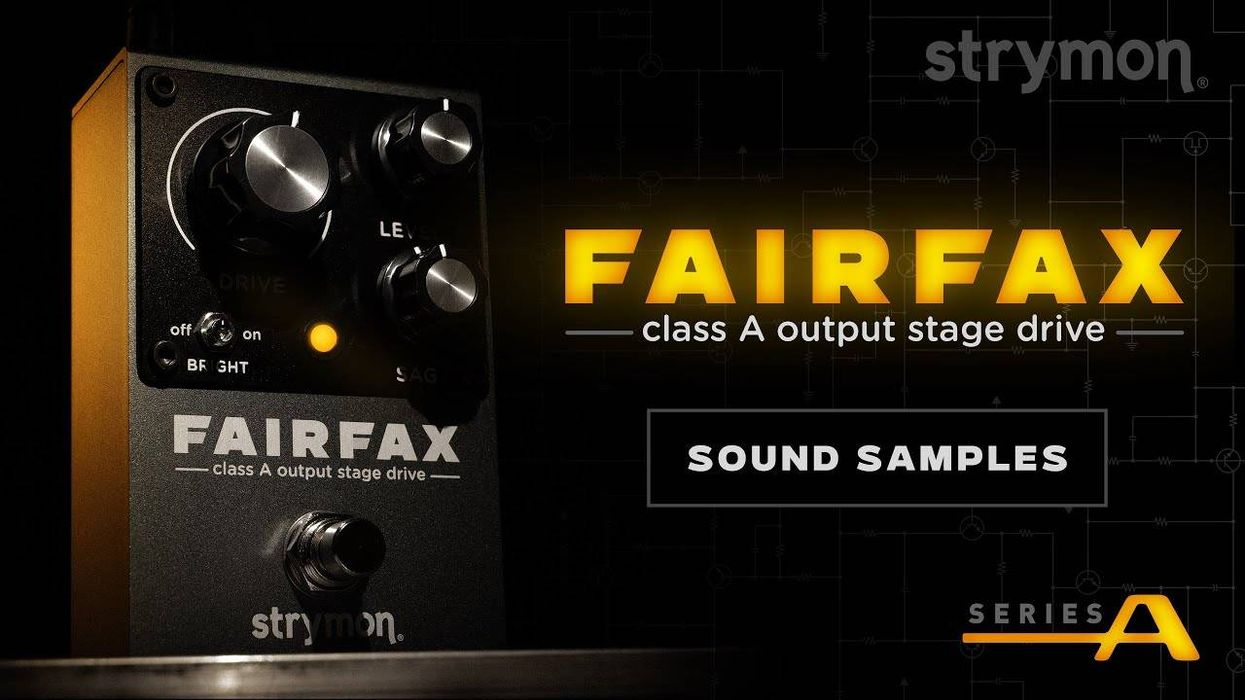
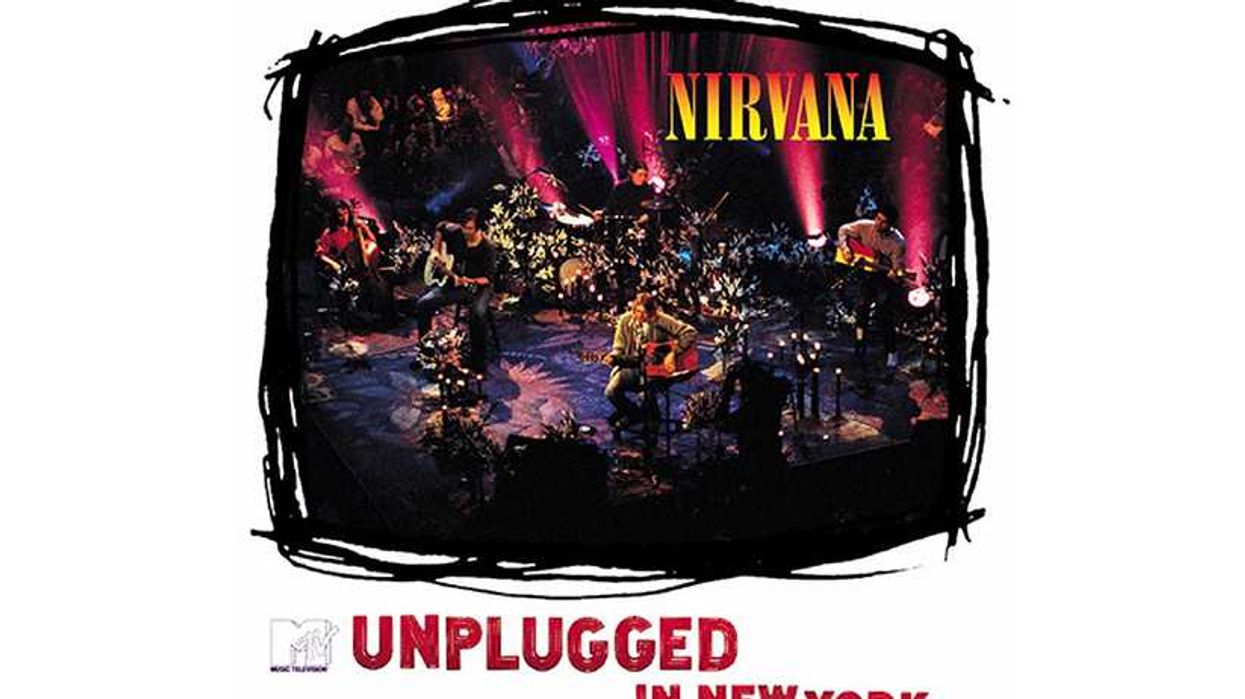
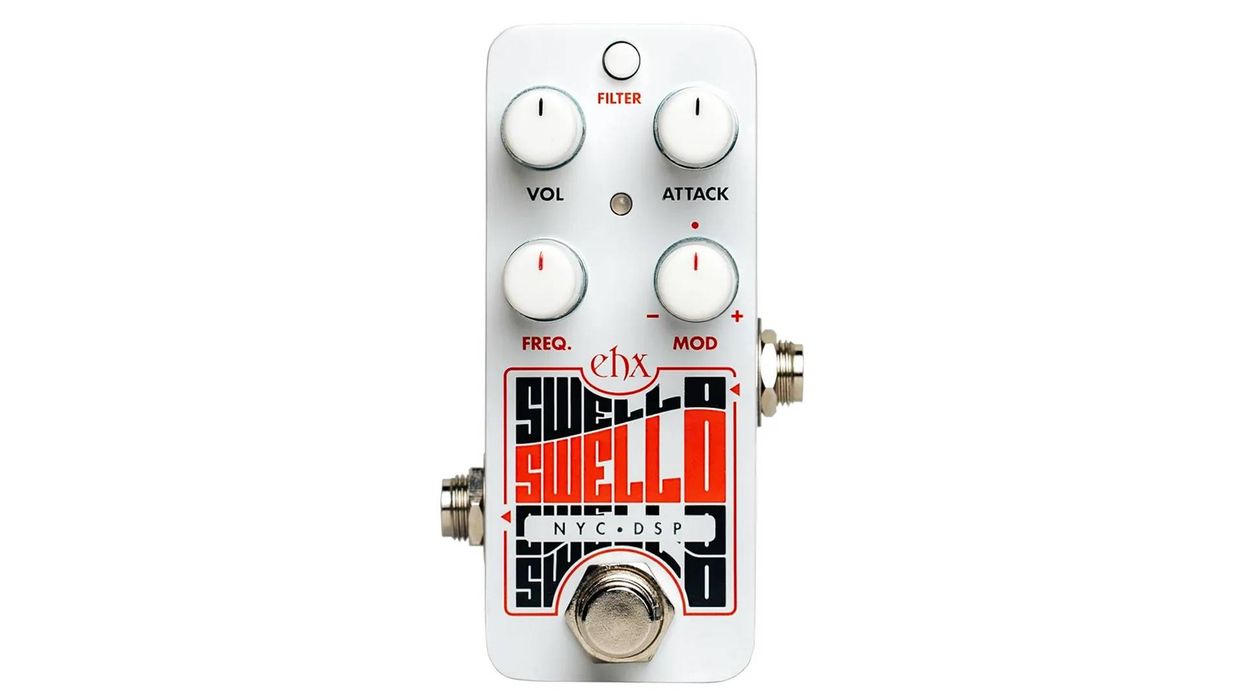
![Rig Rundown: Russian Circles’ Mike Sullivan [2025]](https://www.premierguitar.com/media-library/youtube.jpg?id=62303631&width=1245&height=700&quality=70&coordinates=0%2C0%2C0%2C0)
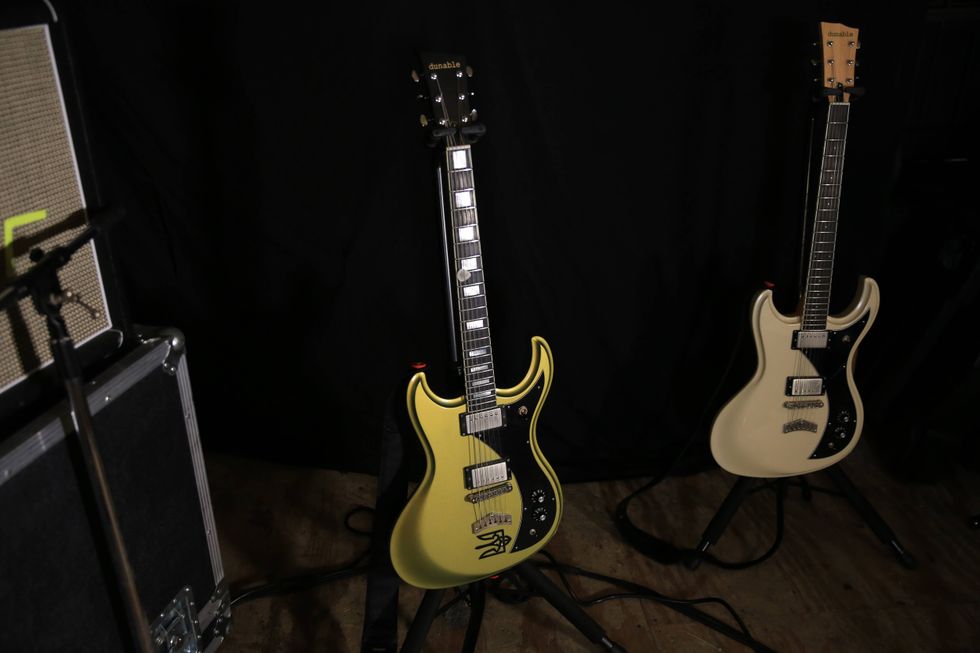
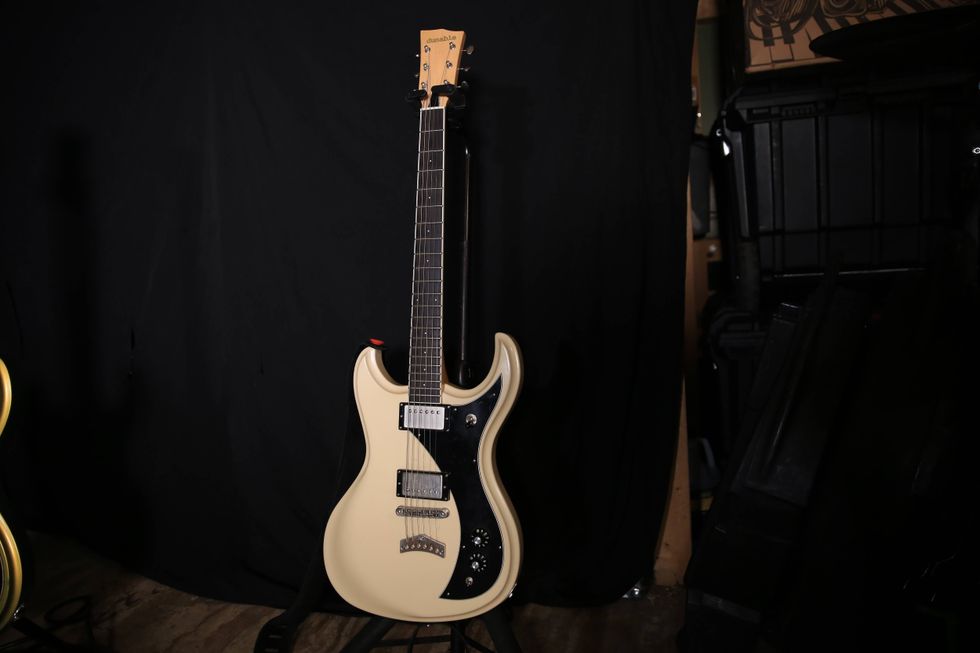
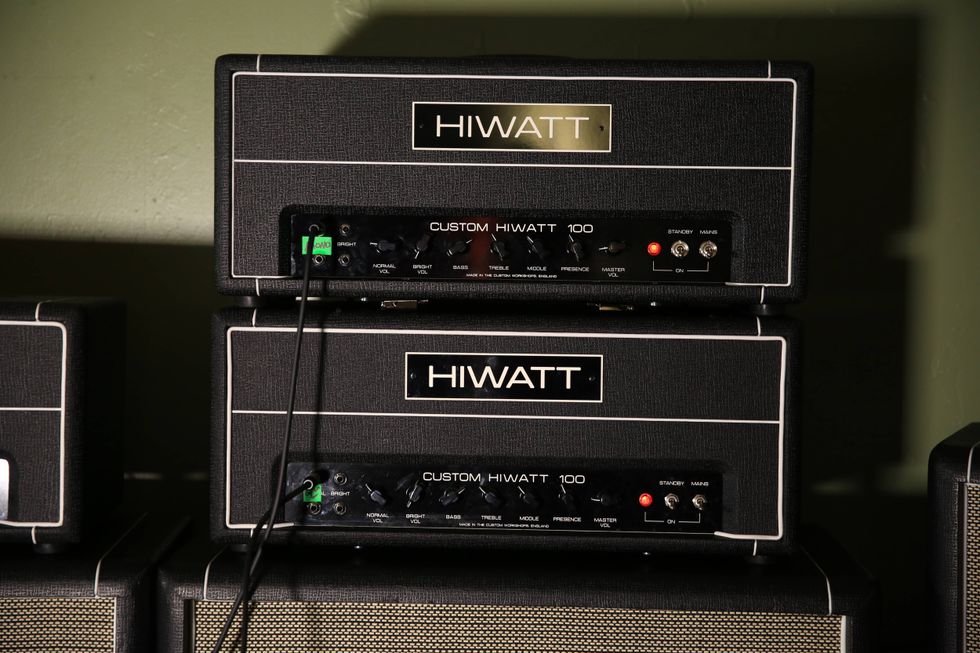
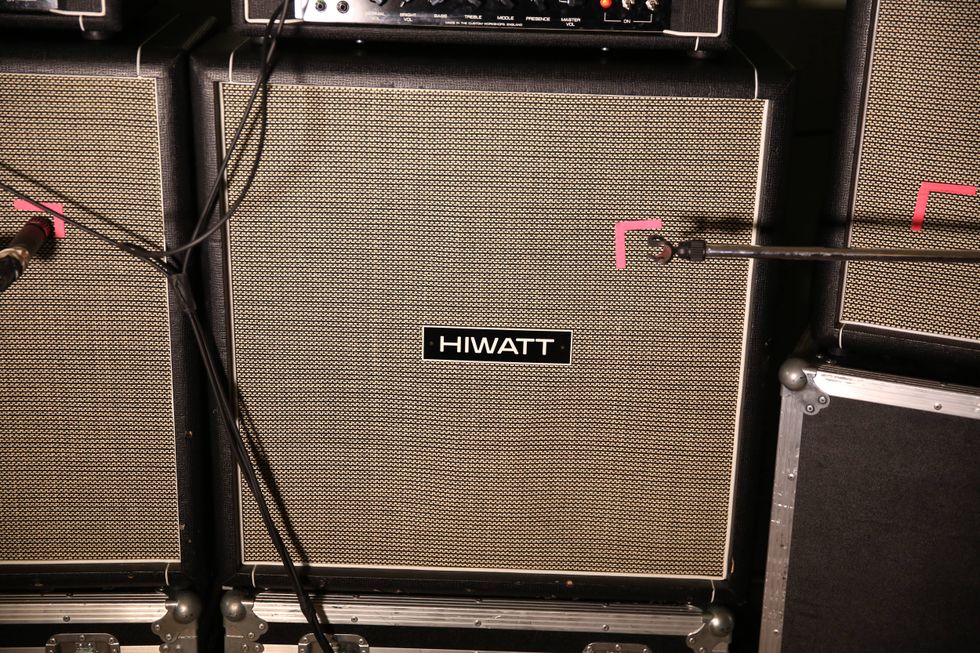
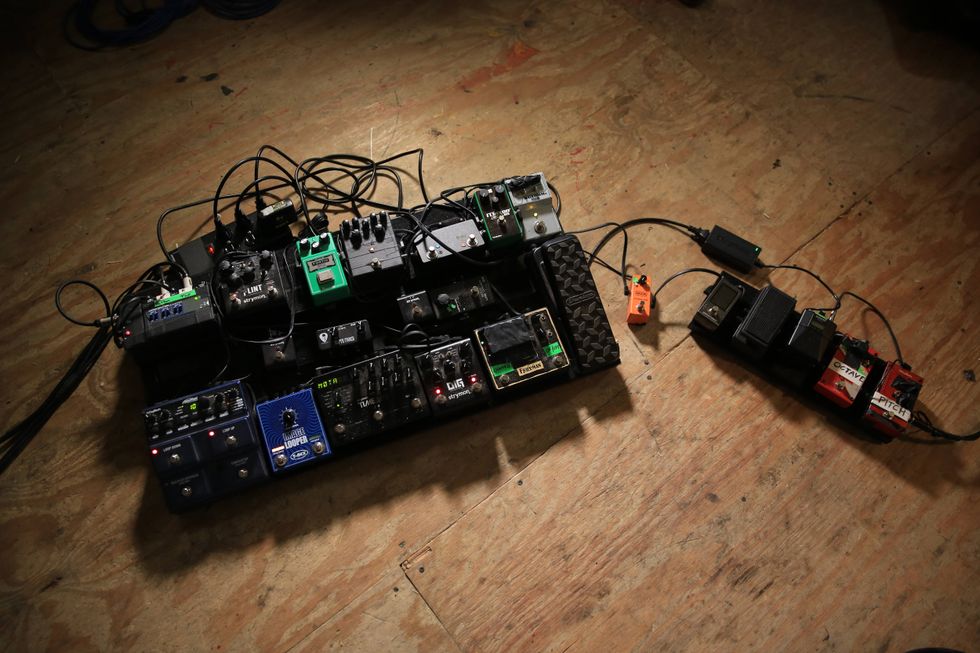

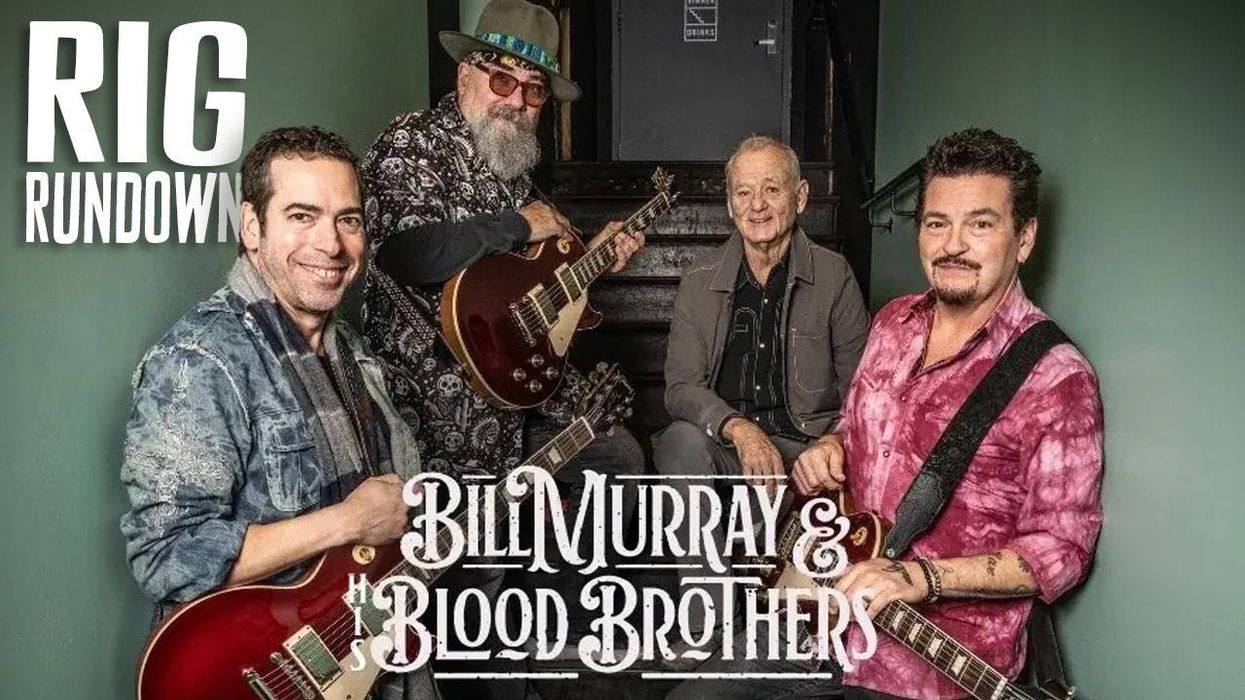
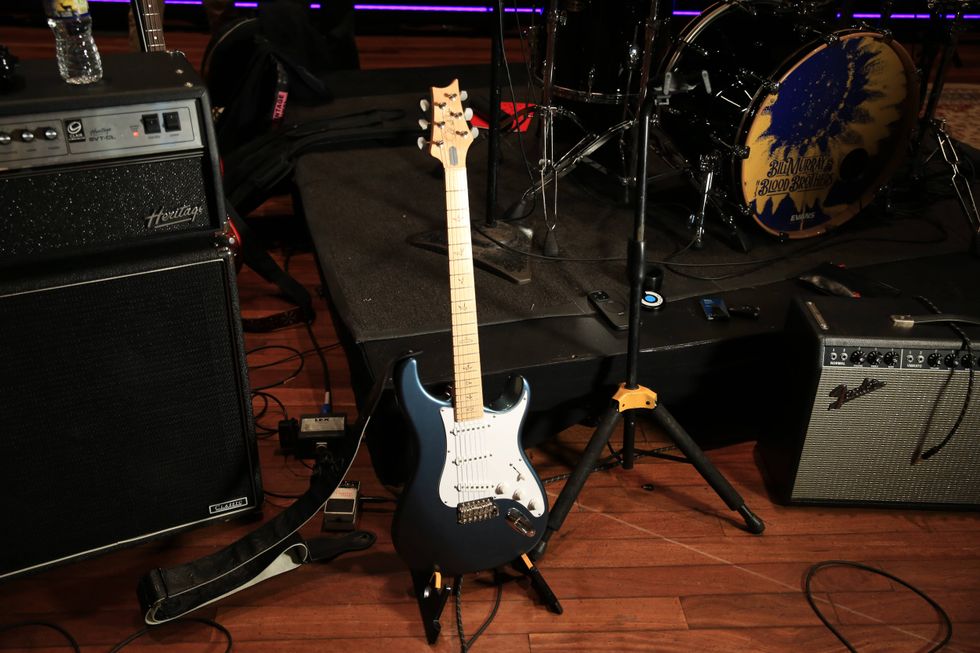
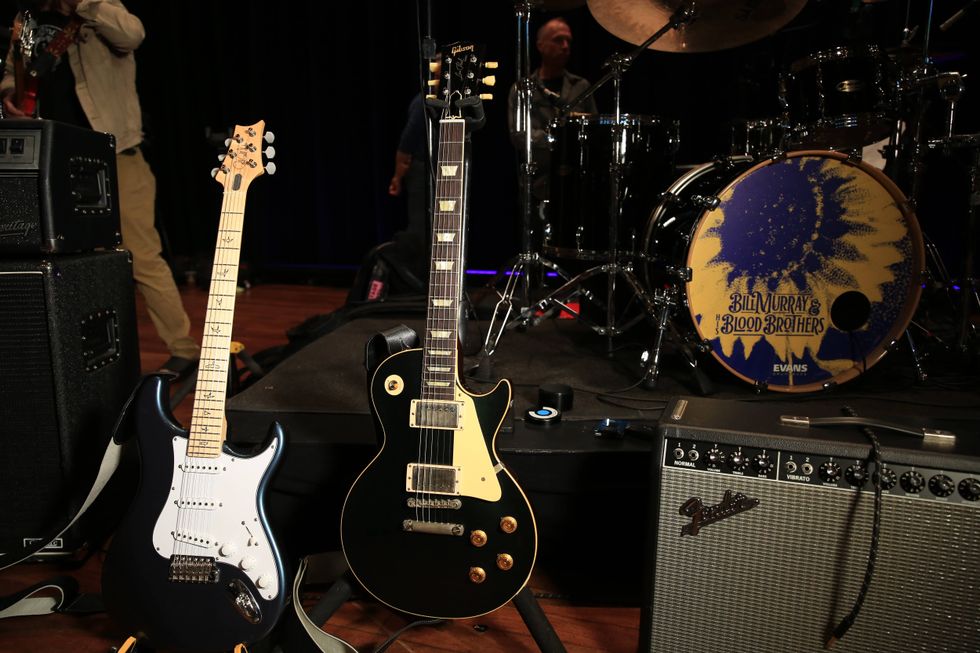
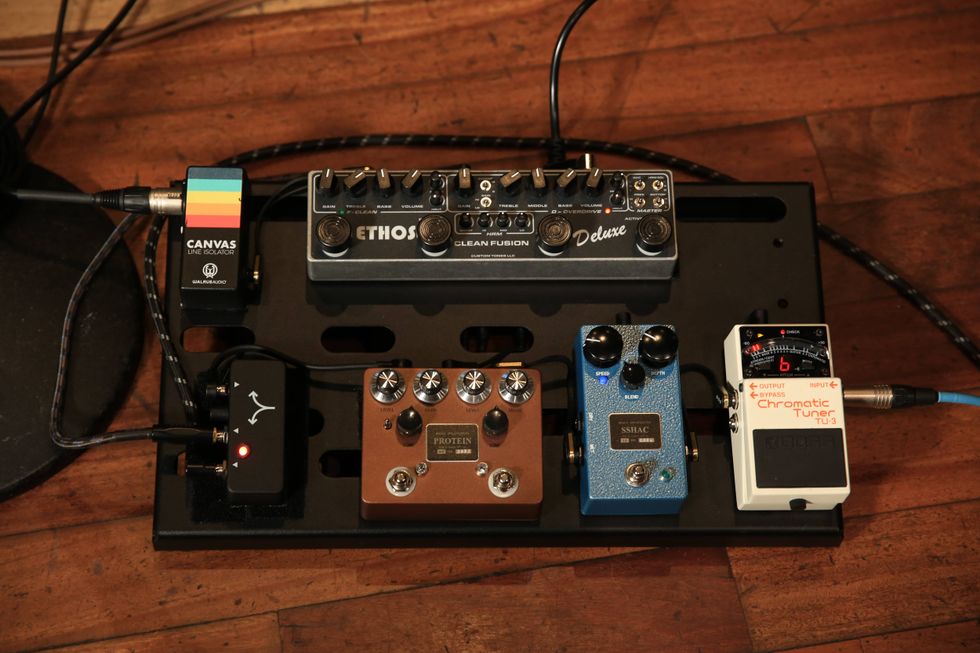
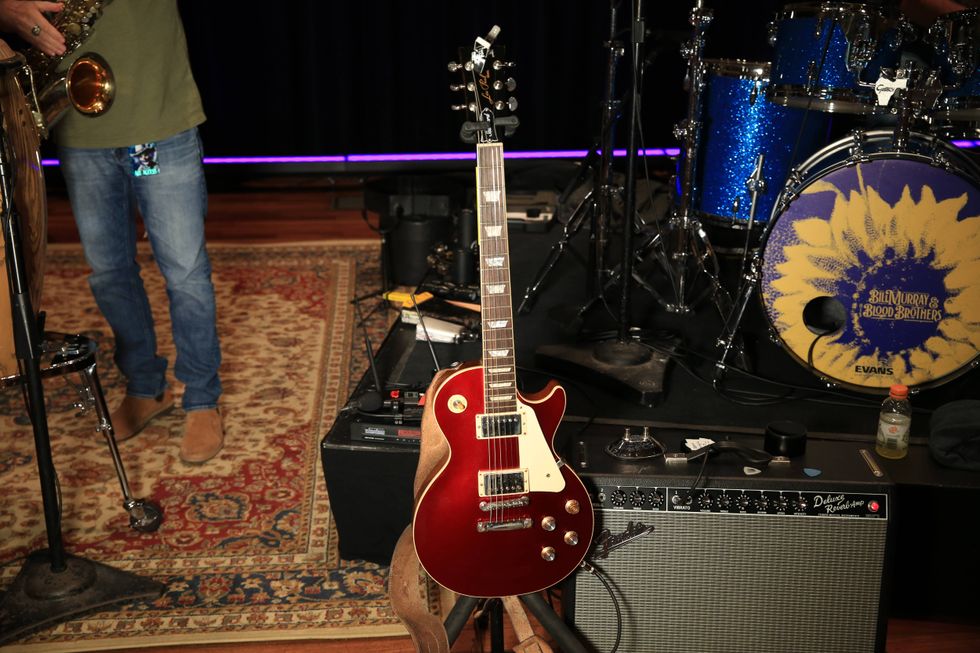
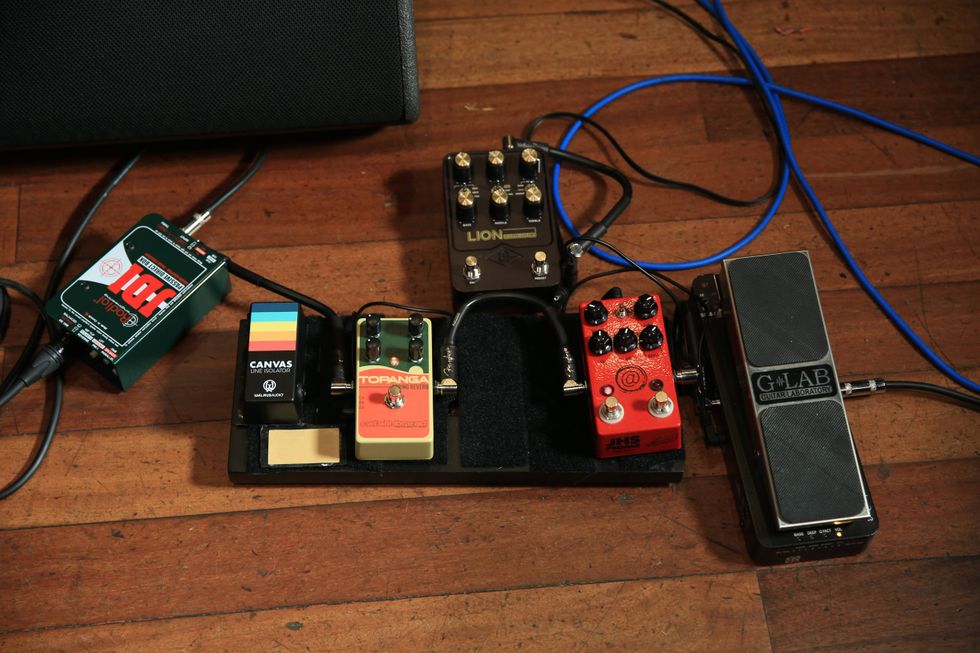
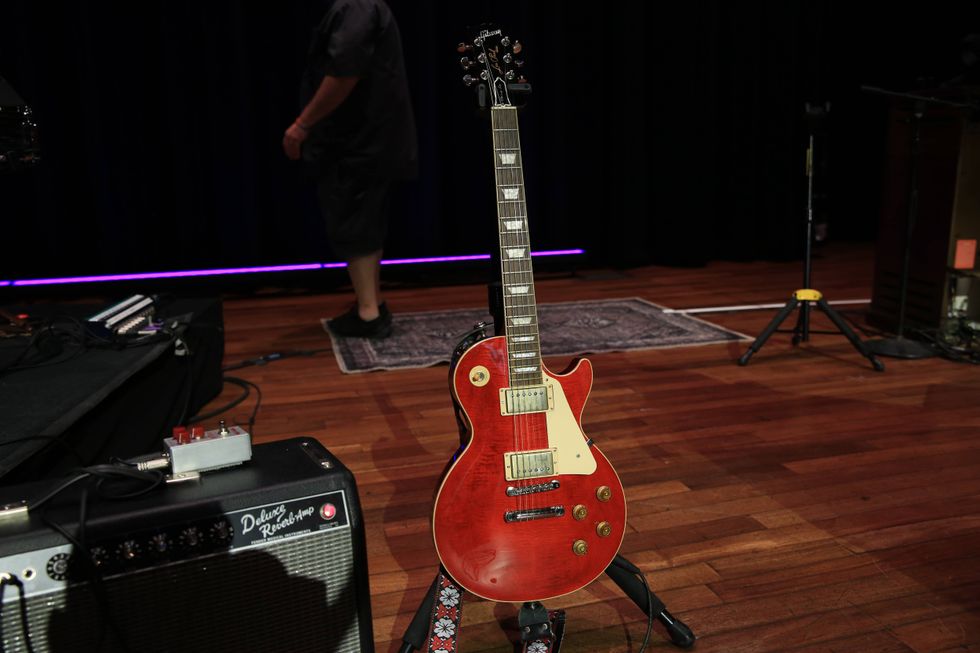
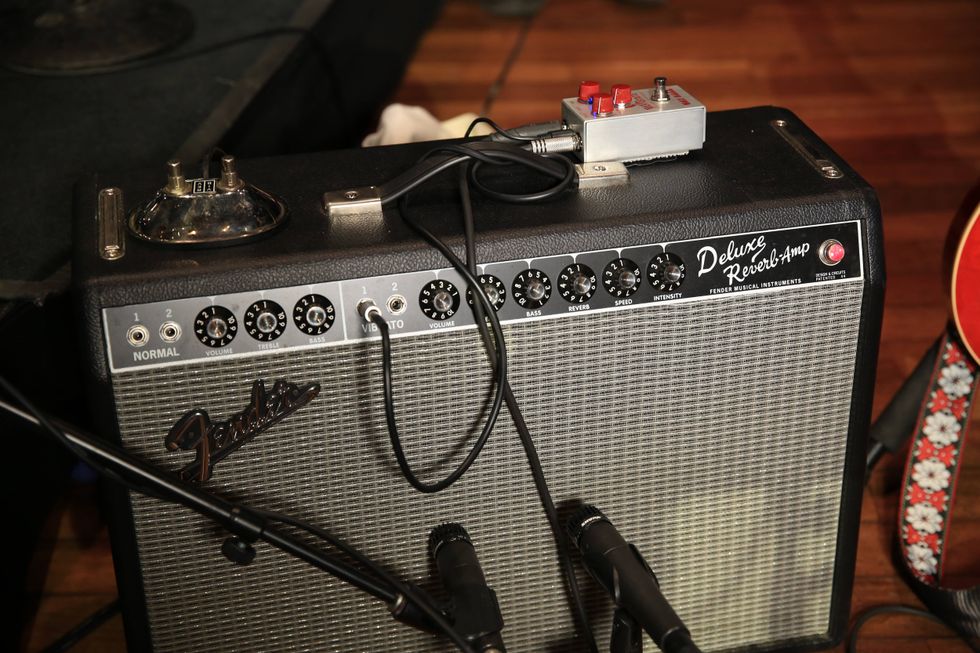
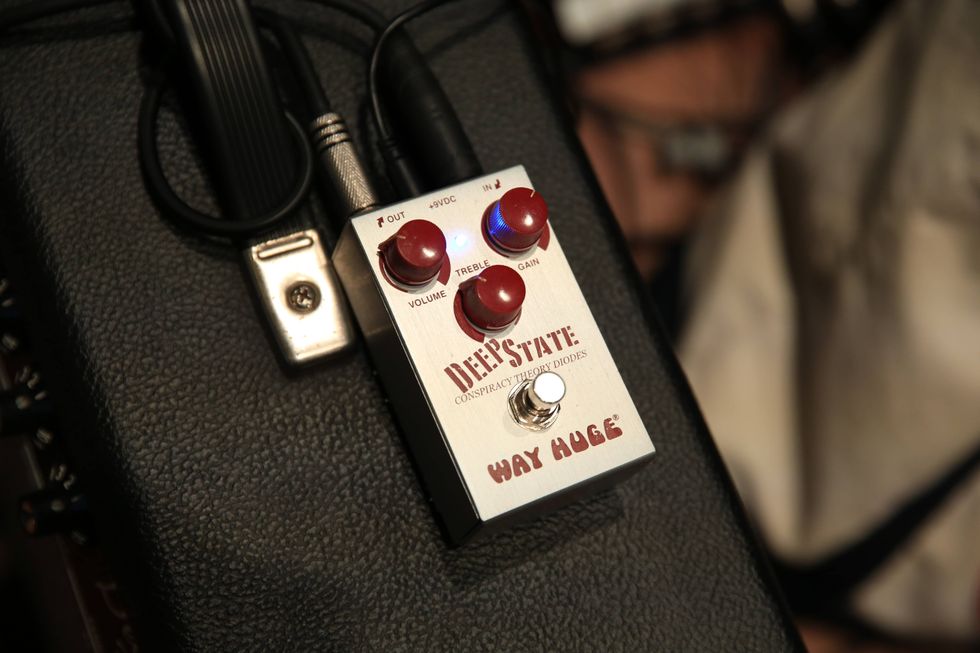

![Rig Rundown: AFI [2025]](https://www.premierguitar.com/media-library/youtube.jpg?id=62064741&width=1245&height=700&quality=70&coordinates=0%2C0%2C0%2C0)
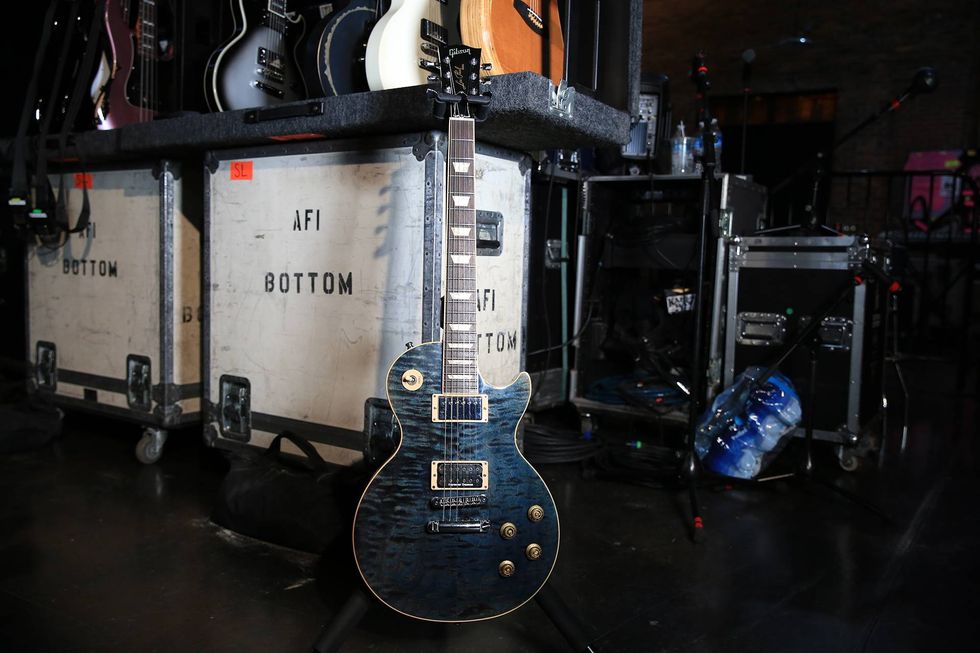
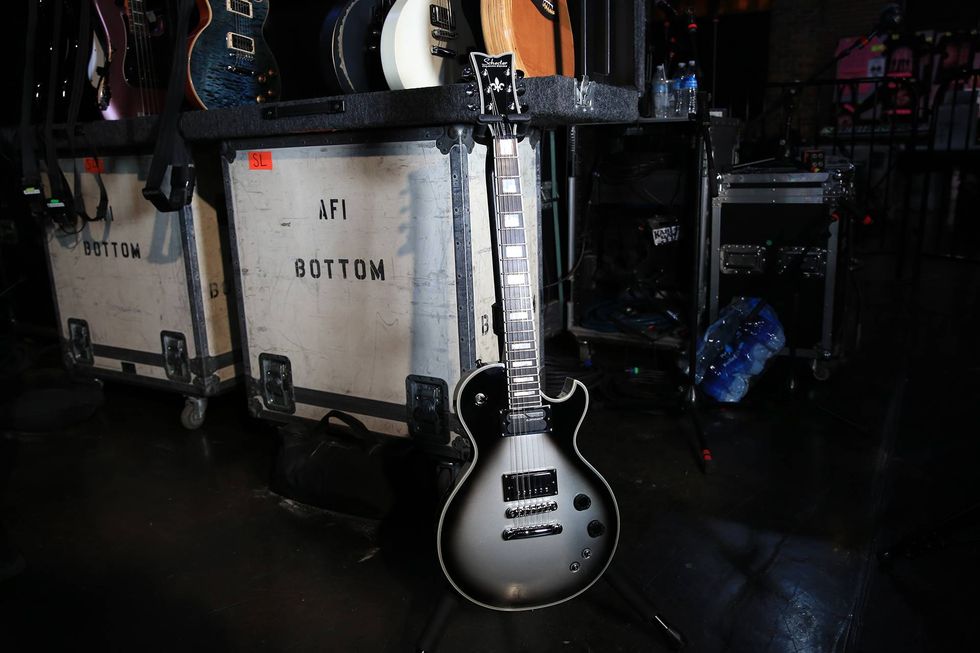
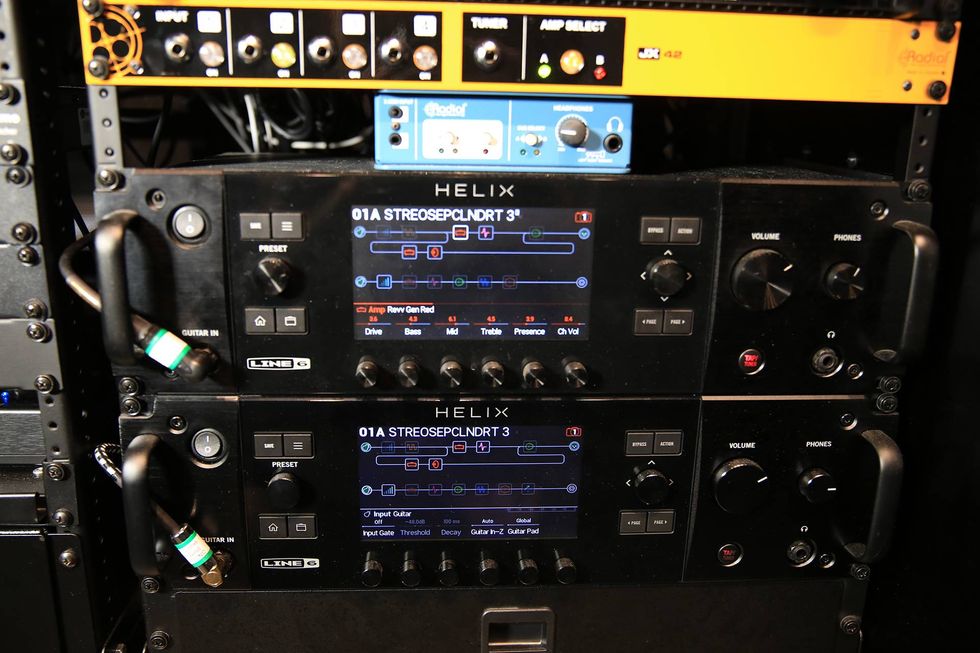
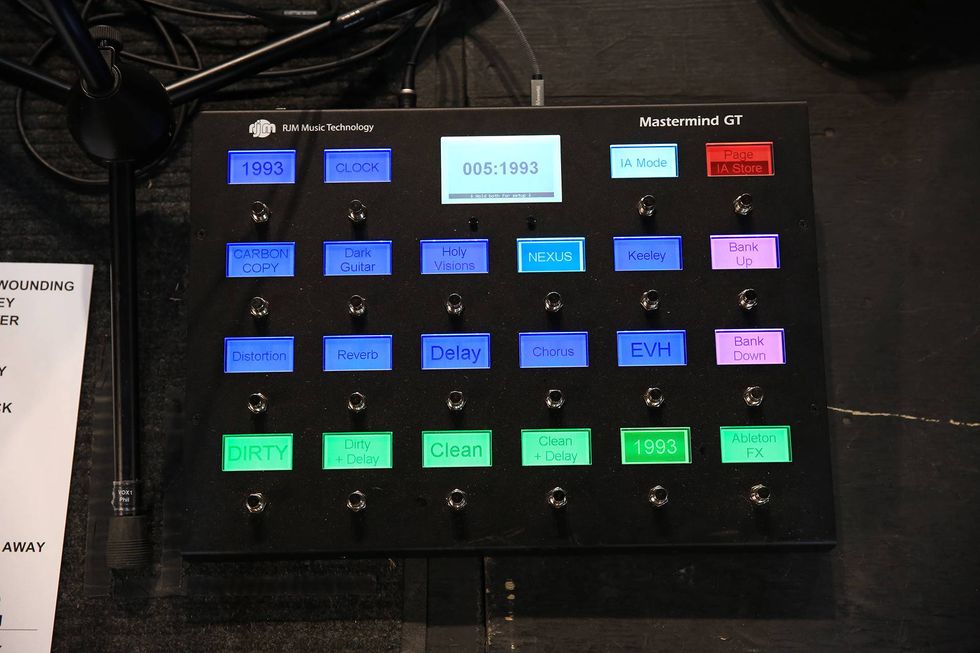
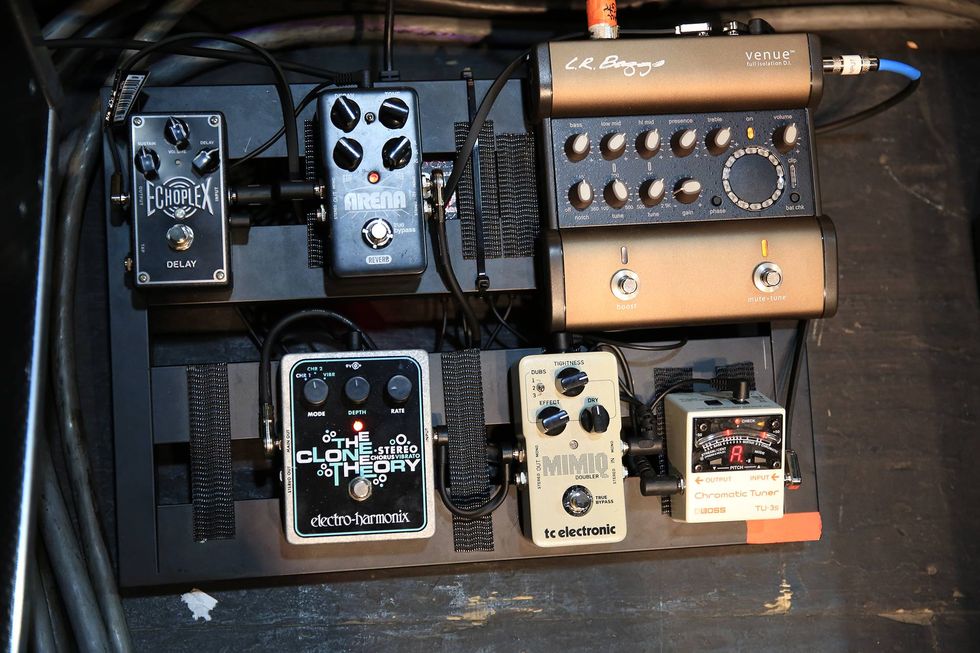
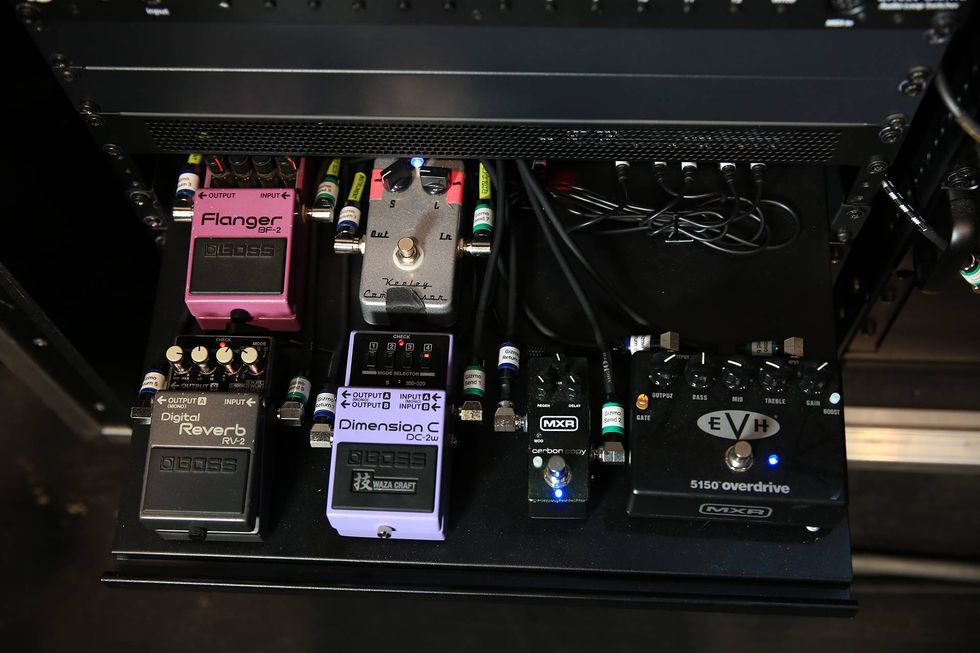
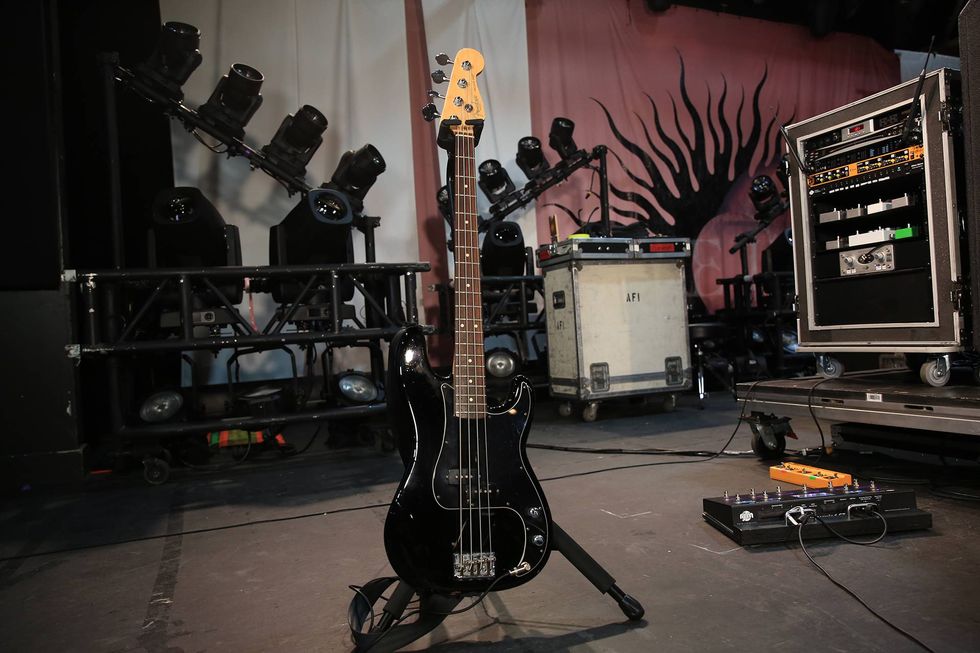
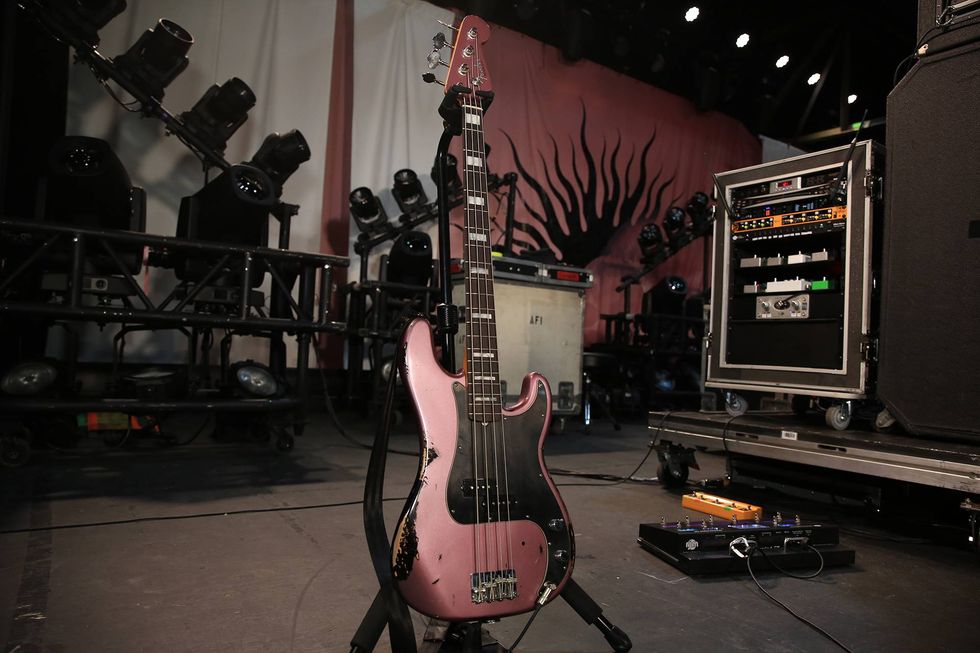
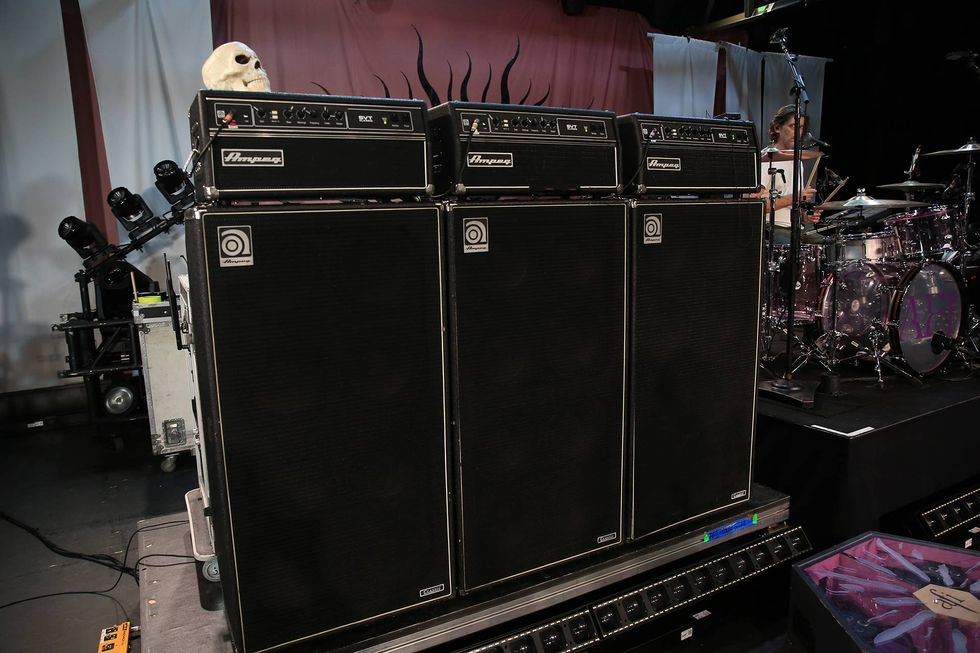
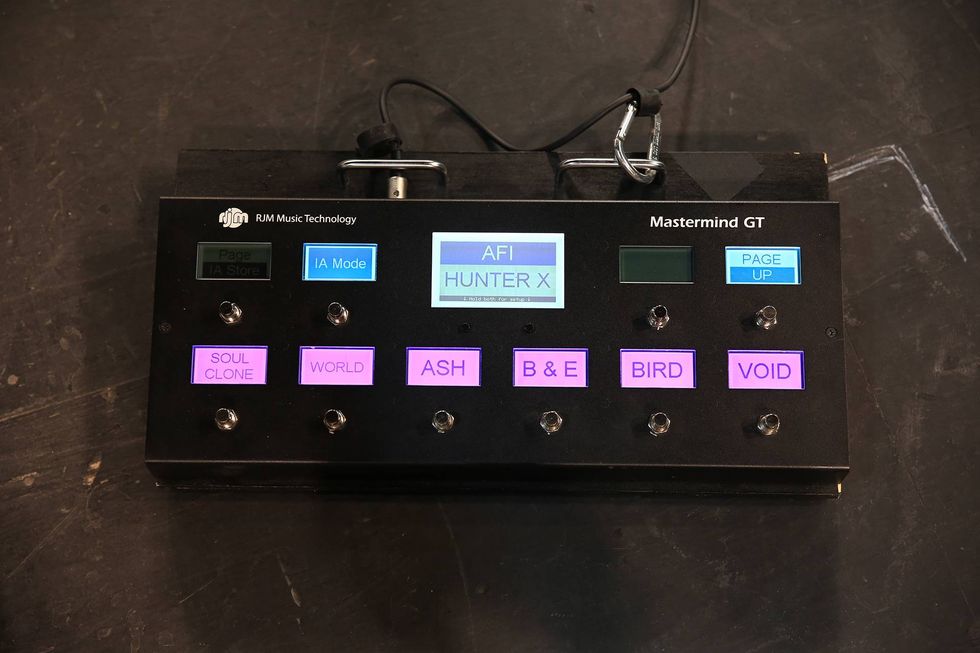
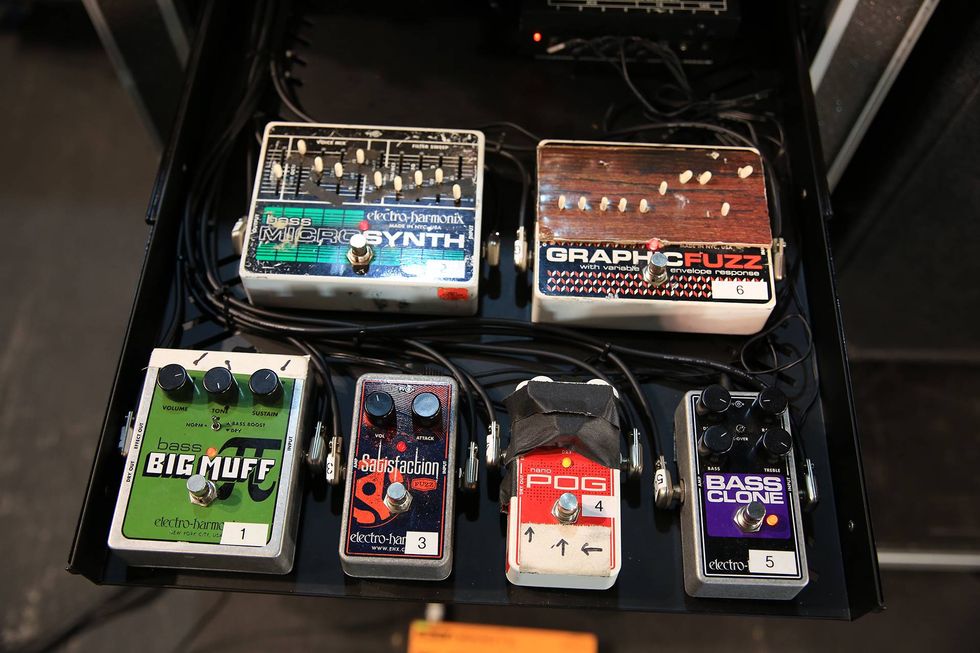
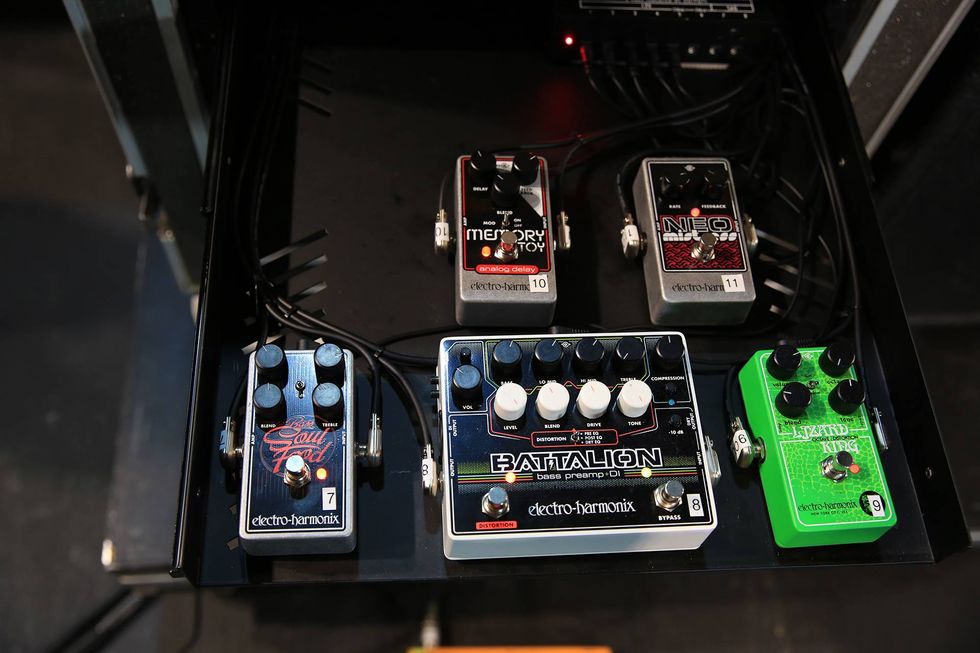
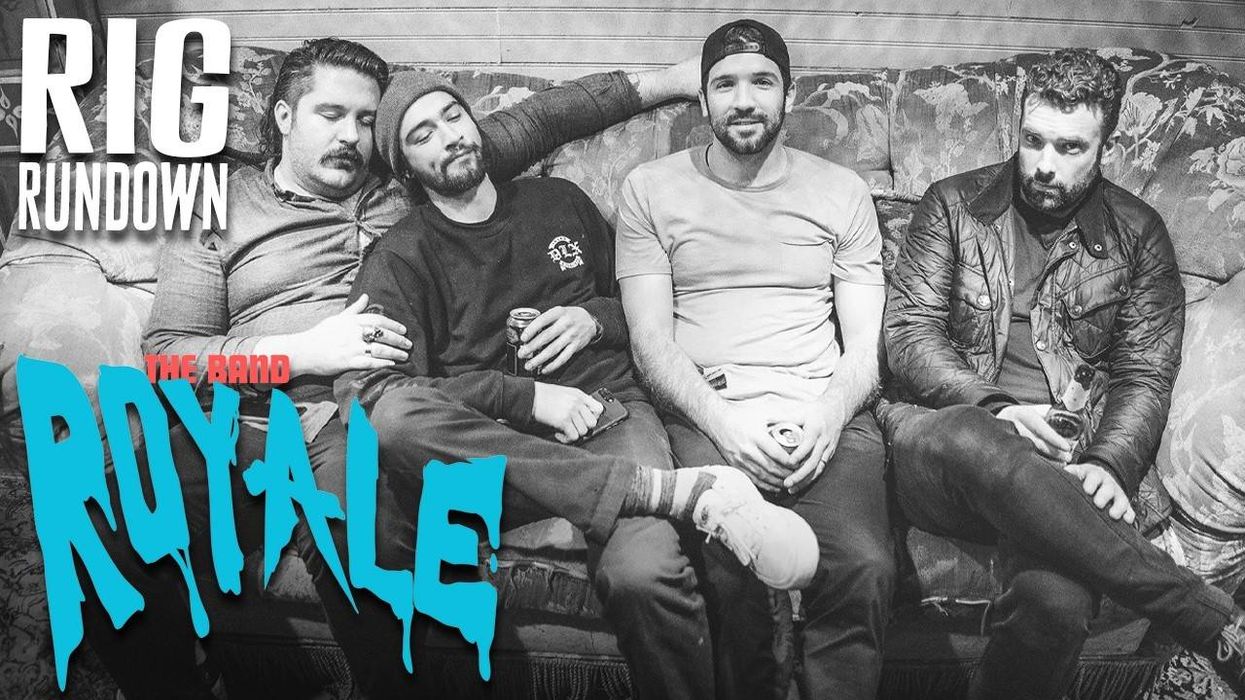
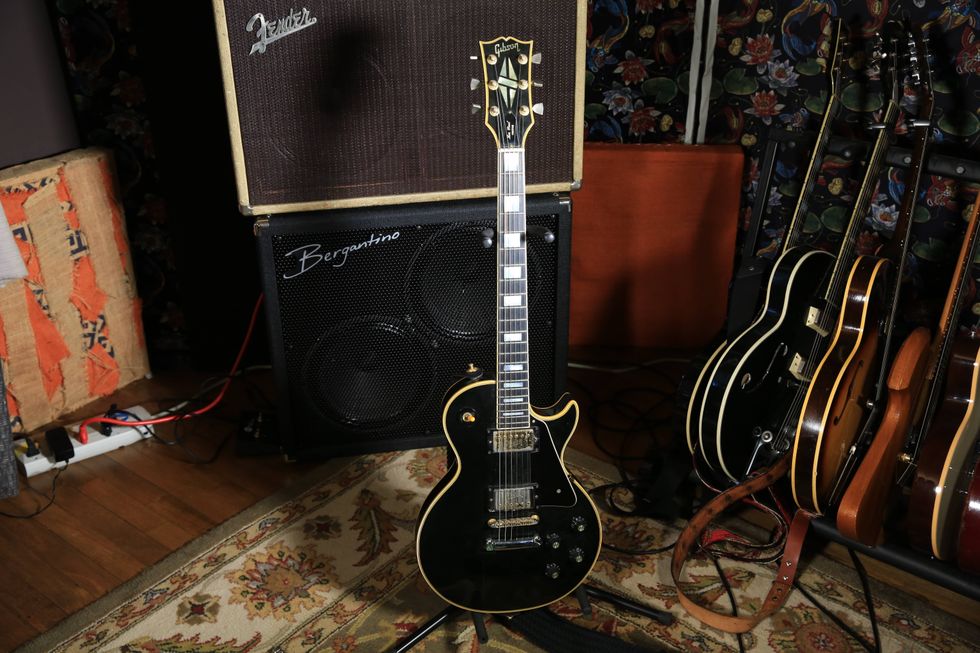
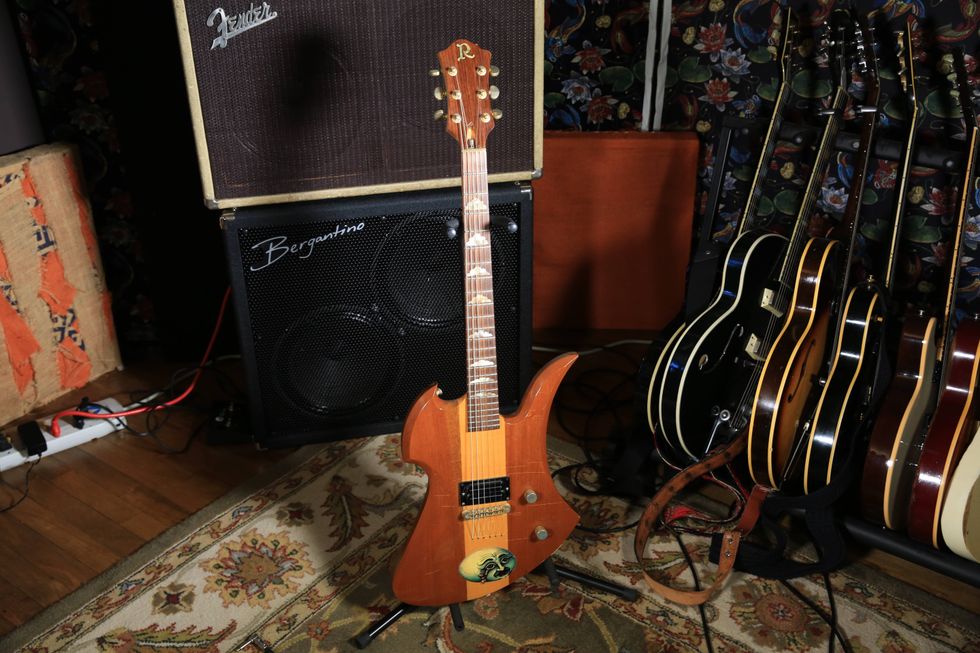
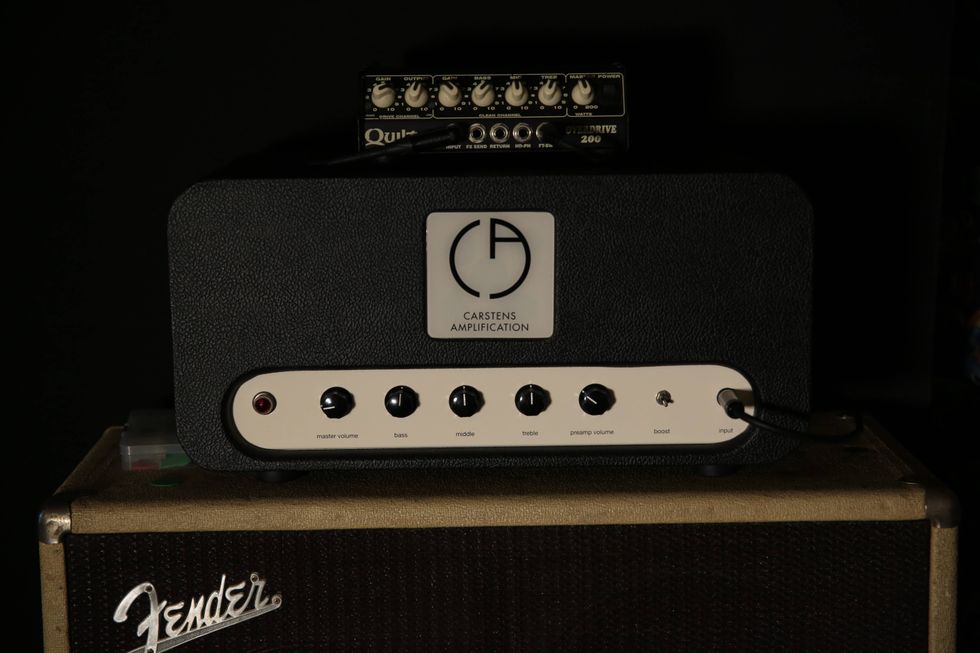
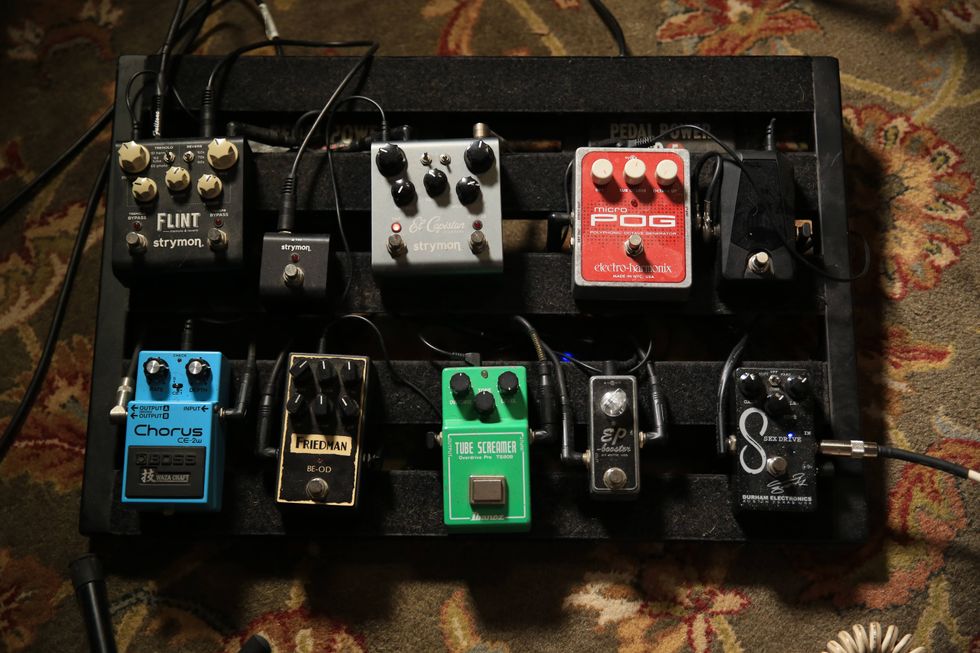
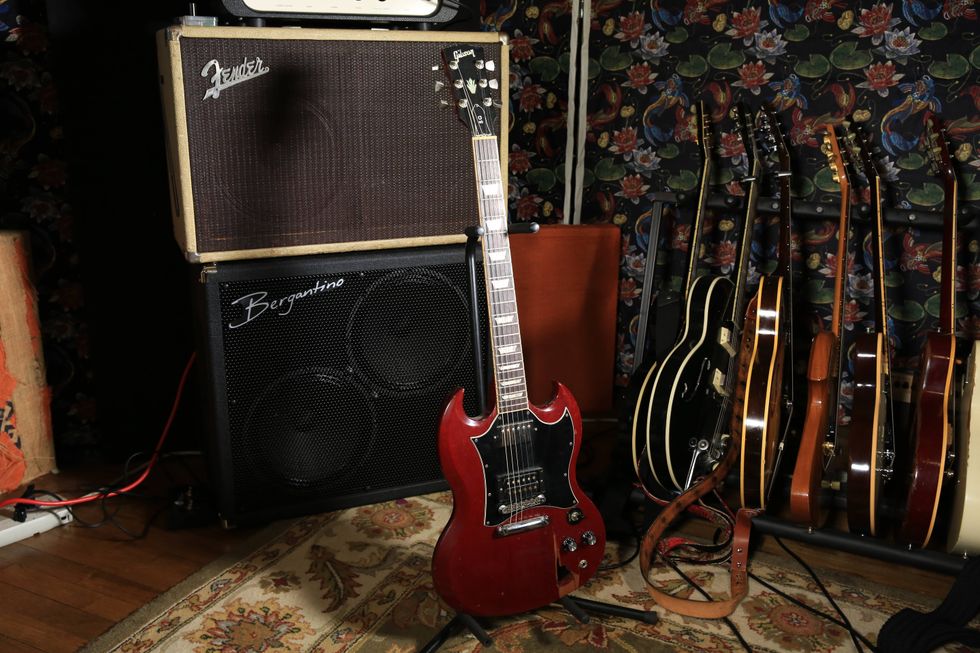
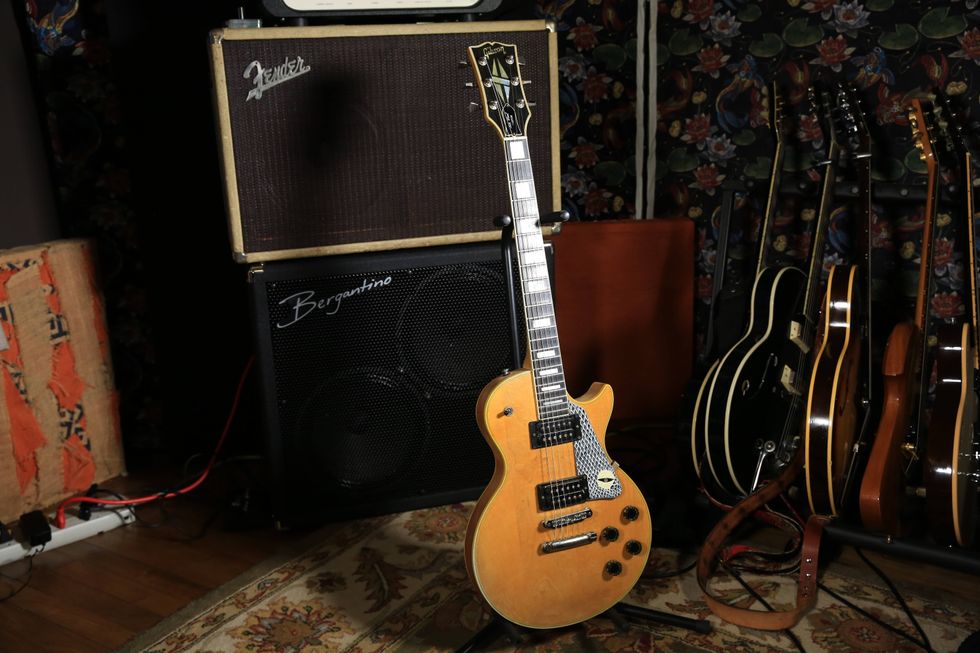
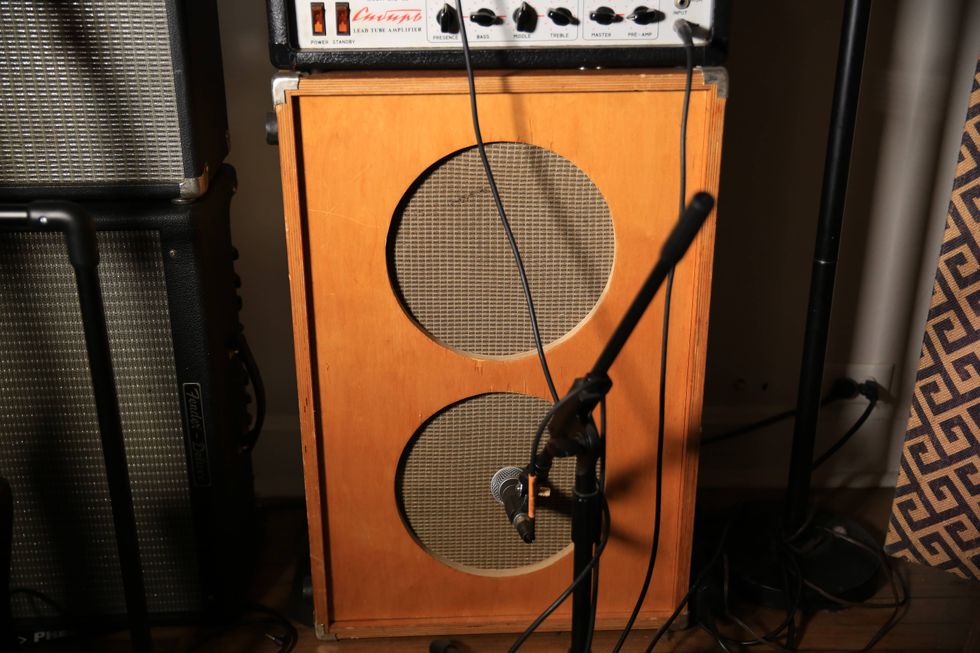
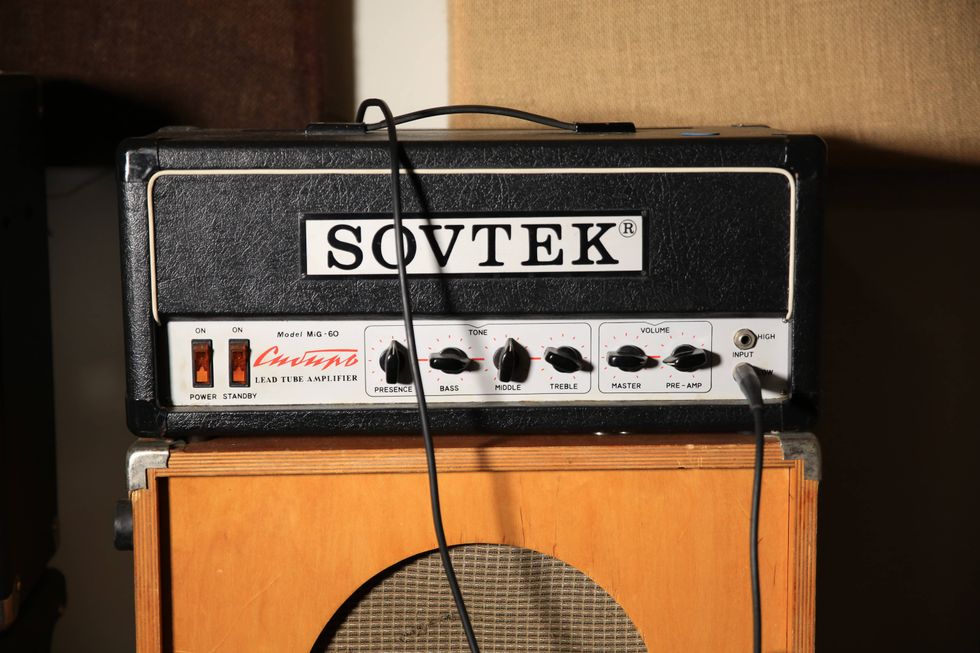 Zach loves his Sovtek Mig 60 head, which he plays through a cab he built himself at a pipe-organ shop in Denver. Every glue joint is lined with thin leather for maximum air tightness, and it’s stocked with Celestion G12M Greenback speakers.
Zach loves his Sovtek Mig 60 head, which he plays through a cab he built himself at a pipe-organ shop in Denver. Every glue joint is lined with thin leather for maximum air tightness, and it’s stocked with Celestion G12M Greenback speakers.